Electrochemistry of Carbon Materials: Progress in Raman Spectroscopy, Optical Absorption Spectroscopy, and Applications
Abstract
:1. Introduction
2. Voltamperometry
3. Spectroelectrochemistry with Raman Spectroscopy
4. Spectroelectrochemistry with Optical Absorption Spectroscopy
5. Investigations of Chemically Functionalized Carbon Nanotubes
5.1. Covalent Functionalization of Carbon Nanotubes
5.2. Gas Sorption on Carbon Nanotubes
5.3. Substitution of Carbon Atoms with Other Atoms
5.4. Intercalation of Nanotube Bundles
5.5. Filling of Carbon Nanotubes
6. Applications of Carbon Material and Chemically Functionalized Carbon Material in Electrochemical Devices
7. Conclusions
Author Contributions
Funding
Data Availability Statement
Acknowledgments
Conflicts of Interest
References
- Jeon, I.; Xiang, R.; Shawky, A.; Matsuo, Y.; Maruyama, S. Single-Walled Carbon Nanotubes in Emerging Solar Cells: Synthesis and Electrode Applications. Adv. Energ. Mater. 2019, 9, 1801312. [Google Scholar] [CrossRef]
- Ferguson, V.; Silva, S.R.P.; Zhang, W. Carbon Materials in Perovskite Solar Cells: Prospects and Future Challenges. Energ. Environ. Mater. 2019, 2, 107–118. [Google Scholar] [CrossRef]
- Liu, B.L.; Wu, F.Q.; Gui, H.; Zheng, M.; Zhou, C.W. Chirality-Controlled Synthesis and Applications of Single-Wall Carbon Nanotubes. ACS Nano 2017, 11, 31–53. [Google Scholar] [CrossRef] [PubMed]
- Bati, A.S.R.; Yu, L.P.; Batmunkh, M.; Shapter, J.G. Recent advances in applications of sorted single-walled carbon nanotubes. Adv. Funct. Mater. 2019, 29, 1902273. [Google Scholar] [CrossRef]
- Moore, K.E.; Tune, D.D.; Flavel, B.S. Double-walled carbon nanotube processing. Adv. Mater. 2015, 27, 3105–3137. [Google Scholar] [CrossRef]
- Kharlamova, M.V. Electronic properties of pristine and modified single-walled carbon nanotubes. Physics-Uspekhi 2013, 56, 1047–1073. [Google Scholar] [CrossRef]
- Kharlamova, M.V. Advances in tailoring the electronic properties of single-walled carbon nanotubes. Prog. Mater. Sci. 2016, 77, 125–211. [Google Scholar] [CrossRef]
- Botos, A.; Biskupek, J.; Chamberlain, T.W.; Rance, G.A.; Stoppiello, C.T.; Sloan, J.; Liu, Z.; Suenaga, K.; Kaiser, U.; Khlobystov, A.N. Carbon Nanotubes as Electrically Active Nanoreactors for Multi-Step Inorganic Synthesis: Sequential Trans-formations of Molecules to Nanoclusters and Nanoclusters to Nanoribbons. J. Am. Chem. Soc. 2016, 138, 8175–8183. [Google Scholar] [CrossRef]
- Jordan, J.W.; Lowe, G.A.; McSweeney, R.L.; Stoppiello, C.T.; Lodge, R.W.; Skowron, S.T.; Biskupek, J.; Rance, G.A.; Kaiser, U.; Walsh, D.A.; et al. Host–Guest Hybrid Redox Materials Self-Assembled from Polyoxo-metalates and Single-Walled Carbon Nanotubes. Adv. Mater. 2019, 31, 1904182. [Google Scholar] [CrossRef]
- Li, L.J.; Khlobystov, A.N.; Wiltshire, J.G.; Briggs, G.A.; Nicholas, R.J. Diameter-selective encapsulation of metallocenes in single-walled carbon nanotubes. Nat. Mater. 2005, 4, 481–485. [Google Scholar] [CrossRef]
- Philp, E.; Sloan, J.; Kirkland, A.I.; Meyer, R.R.; Friedrichs, S.; Hutchison, J.L.; Green, M.L.H. An encapsulated helical one-dimensional cobalt iodide nanostructure. Nat. Mater. 2003, 2, 788–791. [Google Scholar] [CrossRef] [PubMed]
- Medeiros, P.V.C.; Marks, S.; Wynn, J.M.; Vasylenko, A.; Ramasse, Q.M.; Quigley, D.; Sloan, J.; Morris, A.J. Single-Atom Scale Structural Selectivity in Te Nanowires Encapsulated Inside Ultranarrow, Single-Walled Carbon Nanotubes. ACS Nano 2017, 11, 6178–6185. [Google Scholar] [CrossRef]
- Kashtiban, R.J.; Burdanova, M.G.; Vasylenko, A.; Wynn, J.; Medeiros, P.V.C.; Ramasse, Q.; Morris, A.J.; Quigley, D.; Lloyd-Hughes, J.; Sloan, J. Linear and Helical Cesium Iodide Atomic Chains in Ultranarrow Single-Walled Carbon Nanotubes: Impact on Optical Properties. ACS Nano 2021, 15, 13389–13398. [Google Scholar] [CrossRef]
- McSweeney, R.L.; Chamberlain, T.W.; Baldoni, M.; Lebedeva, M.A.; Davies, E.S.; Besley, E.; Khlobystov, A.N. Direct Measurement of Electron Transfer in Nanoscale Host-Guest Systems: Metallocenes in Carbon nanotubes. Chem. Eur. J. 2016, 22, 3540–3549. [Google Scholar] [CrossRef] [PubMed]
- Jordan, J.W.; Townsend, W.J.V.; Johnson, L.R.; Walsh, D.A.; Newton, G.N.; Khlobystov, A.N. Electrochemistry of redox-active molecules confined within narrow carbon nanotubes. Chem. Soc. Rev. 2021, 50, 10895. [Google Scholar] [CrossRef] [PubMed]
- Kitaura, R.; Ogawa, D.; Kobayashi, K.; Saito, T.; Ohshima, S.; Nakamura, T.; Yoshikawa, H.; Awaga, K.; Shinohara, H. High yield synthesis and characterization of the structural and magnetic properties of crystalline ErCl3 nanowires in single-walled carbon nanotube templates. Nano Res. 2008, 1, 152–157. [Google Scholar] [CrossRef]
- Satishkumar, B.C.; Taubert, A.; Luzzi, D.E. Filling single-wall carbon nanotubes with d- and f-metal chloride and metal nanowires. J. Nanosci. Nanotechnol. 2003, 3, 159–163. [Google Scholar] [CrossRef]
- Xu, C.; Sloan, J.; Brown, G.; Bailey, S.; Williams, V.C.; Friedrichs, S.; Coleman, K.S.; Flahaut, E.; Green, M.L.H.; Hutchison, J.L.; et al. 1D lanthanide halide crystals inserted into single-walled carbon nanotubes. Chem. Commun. 2000, 2427–2428. [Google Scholar] [CrossRef]
- Santidrián, A.; Kierkowicz, M.; Pach, E.; Darvasiová, D.; Ballesteros, B.; Tobias, G.; Kalbáč, M. Charge transfer in steam purified arc discharge single walled carbon nanotubes filled with lutetium halides. Phys. Chem. Chem. Phys. 2020, 22, 10063–10075. [Google Scholar] [CrossRef] [PubMed]
- Brown, G.; Bailey, S.R.; Sloan, J.; Xu, C.; Friedrichs, S.; Flahaut, E.; Coleman, K.S.; Green, M.L.H.; Hutchison, J.L.; Dunin-Borkowski, R.E. Electron beam induced in situ clusterisation of 1D ZrCl4 chains within single-walled carbon nanotubes. Chem. Commun. 2001, 845–846. [Google Scholar] [CrossRef]
- Brown, G.; Bailey, S.; Novotny, M.; Carter, R.; Flahaut, E.; Coleman, K.; Hutchison, J.; Green, M.; Sloan, J. High yield incorporation and washing properties of halides incorporated into single walled carbon nanotubes. Appl. Phys. A 2003, 76, 457–462. [Google Scholar] [CrossRef]
- Kirkland, A.I.; Meyer, R.R.; Sloan, J.; Hutchison, J. Structure Determination of Atomically Controlled Crystal Architectures Grown within Single Wall Carbon Nanotubes. Microsc. Microanal. 2005, 11, 401–409. [Google Scholar] [CrossRef] [PubMed]
- Sloan, J.; Friedrichs, S.; Meyer, R.R.; Kirkland, A.I.; Hutchison, J.L.; Green, M.L.H. Structural changes induced in nanocrystals of binary compounds confined within single walled carbon nanotubes: A brief review. Inorg. Chim. Acta 2002, 330, 1–12. [Google Scholar] [CrossRef]
- Sloan, J.; Kirkland, A.I.; Hutchison, J.L.; Green, M.L. Aspects of crystal growth within carbon nanotubes. Comptes Rendus Phys. 2003, 4, 1063–1074. [Google Scholar] [CrossRef]
- Bendall, J.S.; Ilie, A.; Welland, M.E.; Sloan, J.; Green, M.L.H. Thermal Stability and Reactivity of Metal Halide Filled Single-Walled Carbon Nanotubes. J. Phys. Chem. B 2006, 110, 6569–6573. [Google Scholar] [CrossRef]
- Chernysheva, M.V.; Eliseev, A.A.; Lukashin, A.V.; Tretyakov, Y.D.; Savilov, S.V.; Kiselev, N.A.; Zhigalina, O.M.; Kumskov, A.S.; Krestinin, A.V.; Hutchison, J.L. Filling of single-walled carbon nanotubes by Cul nanocrystals via capillary technique. Physica E 2007, 37, 62–65. [Google Scholar] [CrossRef]
- Hutchison, J.L.; Sloan, J.; Kirkland, A.I.; Green, M.L.H. Growing and characterizing one-dimensional crystals within single-walled carbon nanotubes. J. Electron. Microsc. 2004, 53, 101–106. [Google Scholar] [CrossRef]
- Kiselev, N.; Zakalyukin, R.; Zhigalina, O.; Grobert, N.; Kumskov, A.; Grigoriev, Y.V.; Chernysheva, M.; Eliseev, A.; Krestinin, A.; Tretyakov, Y.; et al. The structure of 1D CuI crystals inside SWNTs. J. Microsc. 2008, 232, 335–342. [Google Scholar] [CrossRef]
- Kiselev, N.; Kumskov, A.; Zakalyukin, R.; Vasiliev, A.; Chernisheva, M.; Eliseev, A.; Krestinin, A.; Freitag, B.; Hutchison, J. The structure of nanocomposite 1D cationic conductor crystal@SWNT. J. Microsc. 2012, 246, 309–321. [Google Scholar] [CrossRef]
- Kumskov, A.; Zhigalina, V.; Chuvilin, A.; Verbitskiy, N.; Ryabenko, A.; Zaytsev, D.; Eliseev, A.; Kiselev, N. The structure of 1D and 3D CuI nanocrystals grown within 1.5–2.5 nm single wall carbon nanotubes obtained by catalyzed chemical vapor deposition. Carbon 2012, 50, 4696–4704. [Google Scholar] [CrossRef]
- Meyer, R.R.; Sloan, J.; Dunin-Borkowski, R.E.; Kirkland, A.I.; Novotny, M.C.; Bailey, S.R.; Hutchison, J.L.; Green, M.L.H. Discrete Atom Imaging of One-Dimensional Crystals Formed Within Single-Walled Carbon Nanotubes. Science 2000, 289, 1324–1326. [Google Scholar] [CrossRef] [PubMed]
- Sloan, J.; Novotny, M.; Bailey, S.; Brown, G.; Xu, C.; Williams, V.; Friedrichs, S.; Flahaut, E.; Callender, R.; York, A.; et al. Two layer 4:4 co-ordinated KI crystals grown within single walled carbon nanotubes. Chem. Phys. Lett. 2000, 329, 61–65. [Google Scholar] [CrossRef]
- Flahaut, E.; Sloan, J.; Friedrichs, S.; Kirkland, A.I.; Coleman, K.S.; Williams, V.C.; Hanson, N.; Hutchison, J.L.; Green, M.L.H. Crystallization of 2H and 4H PbI2 in Carbon Nanotubes of Varying Diameters and Morphologies. Chem. Mater. 2006, 18, 2059–2069. [Google Scholar] [CrossRef]
- Kharlamova, V.; Mochalin, V.N.; Lukatskaya, M.R.; Niu, J.J.; Presser, V.; Mikhalovsky, S.; Gogotsi, Y. Adsorption of proteins in channels of carbon nanotubes: Effect of surface chemistry. Mater. Express 2013, 3, 1–10. [Google Scholar] [CrossRef]
- Sloan, J.; Grosvenor, S.J.; Friedrichs, S.; Kirkland, A.I.; Hutchison, J.L.; Green, M.L.H. A one-dimensional BaI2 chain with five- and six-coordination, formed within a single-walled carbon nanotube. Angew. Chem. Int. Ed. 2002, 41, 1156. [Google Scholar] [CrossRef]
- Friedrichs, S.; Falke, U.; Green, M.L.H. Phase separation of Lal(3) inside single-walled carbon nanotubes. Chemphyschem 2005, 6, 300–305. [Google Scholar] [CrossRef]
- Friedrichs, S.; Kirkland, A.I.; Meyer, R.R.; Sloan, J.; Green, M.L.H. LaI2@(18,3)SWNT: The unprecedented structure of a LaI2 “Crystal” encapsulated within a single-walled carbon nanotube. Microsc. Microanal. 2005, 11, 421–430. [Google Scholar] [CrossRef]
- Sloan, J.; Terrones, M.; Nufer, S.; Friedrichs, S.; Bailey, S.R.; Woo, H.G.; Ruhle, M.; Hutchison, J.L.; Green, M.L.H. Metastable one-dimensional AgCl1-xIx solid-solution wurzite “tunnel” crystals formed within single-walled carbon nanotubes. J. Am. Chem. Soc. 2002, 124, 2116–2117. [Google Scholar] [CrossRef]
- Falaleev, N.S.; Kumskov, A.S.; Zhigalina, V.G.; Verbitskiy, I.I.; Vasiliev, A.L.; Makarova, A.A.; Vyalikh, D.V.; Kiselev, N.A.; Eliseev, A.A. Capsulate structure effect on SWNTs doping in RbxAg1-xI@SWNT composites. Crystengcomm 2017, 19, 3063–3070. [Google Scholar] [CrossRef]
- Sloan, J.; Kirkland, A.I.; Hutchison, J.L.; Green, M.L.H. Integral atomic layer architectures of 1D crystals inserted into single walled carbon nanotubes. Chem. Commun. 2002, 1319–1332. [Google Scholar] [CrossRef]
- Eremina, V.A.; Fedotov, P.V.; Obraztsova, E.D. Copper chloride functionalization of semiconducting and metallic fractions of single-walled carbon nanotubes. J. Nanophotonics 2015, 10, 012515. [Google Scholar] [CrossRef]
- Fedotov, P.V.; Tonkikh, A.A.; Obraztsova, E.A.; Nasibulin, A.G.; Kauppinen, E.I.; Chuvilin, A.L.; Obraztsova, E.D. Optical properties of single-walled carbon nanotubes filled with CuCl by gas-phase technique. Phys. Status Solidi 2014, 251, 2466–2470. [Google Scholar] [CrossRef]
- Fedotov, P.V.; Eremina, V.A.; Tonkikh, A.A.; Chernov, A.I.; Obraztsova, E.D. Enhanced optical transparency of films formed from sorted metallic or semiconducting single-walled carbon nanotubes filled with CuCl. Phys. Status Solidi 2016, 253, 2400–2405. [Google Scholar] [CrossRef]
- Nakanishi, R.; Kitaura, R.; Ayala, P.; Shiozawa, H.; de Blauwe, K.; Hoffmann, P.; Choi, D.; Miyata, Y.; Pichler, T.; Shinohara, H. Electronic structure of Eu atomic wires encapsulated inside single-wall carbon nanotubes. Phys. Rev. B 2012, 86, 115445. [Google Scholar] [CrossRef]
- Ayala, P.; Kitaura, R.; Nakanishi, R.; Shiozawa, H.; Ogawa, D.; Hoffmann, P.; Shinohara, H.; Pichler, T. Templating rare-earth hybridization via ultrahigh vacuum annealing of ErCl3 nanowires inside carbon nanotubes. Phys. Rev. B 2011, 83, 085407. [Google Scholar] [CrossRef]
- Zakalyukin, R.; Mavrin, B.; Dem’Yanets, L.; Kiselev, N. Synthesis and characterization of single-walled carbon nanotubes filled with the superionic material SnF2. Carbon 2008, 46, 1574–1578. [Google Scholar] [CrossRef]
- Burteaux, B.; Claye, A.; Smith, B.W.; Monthioux, M.; Luzzi, D.E.; Fischer, J.E. Abundance of encapsulated C60 in single-wall carbon nanotubes. Chem. Phys. Lett. 1999, 310, 21–24. [Google Scholar] [CrossRef]
- Chamberlain, T.W.; Popov, A.M.; Knizhnik, A.A.; Samoilov, G.E.; Khlobystov, A.N. The Role of Molecular Clusters in the Filling of Carbon Nanotubes. ACS Nano 2010, 4, 5203–5210. [Google Scholar] [CrossRef]
- Hirahara, K.; Suenaga, K.; Bandow, S.; Kato, H.; Okazaki, T.; Shinohara, H.; Iijima, S. One-Dimensional Metallofullerene Crystal Generated Inside Single-Walled Carbon Nanotubes. Phys. Rev. Lett. 2000, 85, 5384–5387. [Google Scholar] [CrossRef] [PubMed]
- Jeong, G.-H.; Hirata, T.; Hatakeyama, R.; Tohji, K.; Motomiya, K. C60 encapsulation inside single-walled carbon nanotubes using alkali–fullerene plasma method. Carbon 2002, 40, 2247–2253. [Google Scholar] [CrossRef]
- Kataura, H.; Maniwa, Y.; Kodama, T.; Kikuchi, K.; Hirahara, K.; Suenaga, K.; Iijima, S.; Suzuki, S.; Achiba, Y.; Krätschmer, W. High-yield fullerene encapsulation in single-wall carbon nanotubes. Synth. Met. 2001, 121, 1195–1196. [Google Scholar] [CrossRef]
- Kataura, H.; Maniwa, Y.; Abe, M.; Fujiwara, A.; Kodama, T.; Kikuchi, K.; Imahori, H.; Misaki, Y.; Suzuki, S.; Achiba, Y. Optical properties of fullerene and non-fullerene peapods. Appl. Phys. A 2002, 74, 349–354. [Google Scholar] [CrossRef]
- Khlobystov, A.N.; Britz, D.A.; Wang, J.; O’Neil, S.A.; Poliakoff, M.; Briggs, G.A.D. Low temperature assembly of fullerene arrays in single-walled carbon nanotubes using supercritical fluids. J. Mater. Chem. 2004, 14, 2852–2857. [Google Scholar] [CrossRef]
- Khlobystov, A.N.; Porfyrakis, K.; Kanai, M.; Britz, D.A.; Ardavan, A.; Shinohara, H.; Dennis, T.J.S.; Briggs, G.A.D. Molecular motion of endohedral fullerenes in single-walled carbon nanotubes. Angew. Chem. Int. Ed. 2004, 43, 1386–1389. [Google Scholar] [CrossRef]
- Khlobystov, A.N.; Britz, D.A.; Briggs, G.A.D. Molecules in carbon nanotubes. Accounts Chem. Res. 2005, 38, 901–909. [Google Scholar] [CrossRef]
- Luzzi, D.E.; Smith, B.W. Carbon cage structures in single wall carbon nanotubes: A new class of materials. Carbon 2000, 38, 1751–1756. [Google Scholar] [CrossRef]
- Monthioux, M.; Smith, B.; Burteaux, B.; Claye, A.; Fischer, J.; Luzzi, D. Sensitivity of single-wall carbon nanotubes to chemical processing: An electron microscopy investigation. Carbon 2001, 39, 1251–1272. [Google Scholar] [CrossRef]
- Shimada, T.; Ohno, Y.; Okazaki, T.; Sugai, T.; Suenaga, K.; Kishimoto, S.; Mizutani, T.; Inoue, T.; Taniguchi, R.; Fukui, N.; et al. Transport properties of C-78, C-90 and Dy@C-82 fullerenes-nanopeapods by field effect transistors. Physica E 2004, 21, 1089–1092. [Google Scholar] [CrossRef]
- Shiozawa, H.; Ishii, H.; Kihara, H.; Sasaki, N.; Nakamura, S.; Yoshida, T.; Takayama, Y.; Miyahara, T.; Suzuki, S.; Achiba, Y.; et al. Photoemission and inverse photoemission study of the electronic structure of C60 fullerenes encapsulated in single-walled carbon nanotubes. Phys. Rev. B 2006, 73, 075406. [Google Scholar] [CrossRef]
- Simon, F.; Kuzmany, H.; Rauf, H.; Pichler, T.; Bernardi, J.; Peterlik, H.; Korecz, L.; Fülöp, F.; Jánossy, A. Low temperature fullerene encapsulation in single wall carbon nanotubes: Synthesis of N@C60@SWCNT. Chem. Phys. Lett. 2004, 383, 362–367. [Google Scholar] [CrossRef] [Green Version]
- Sloan, J.; Dunin-Borkowski, R.E.; Hutchison, J.L.; Coleman, K.S.; Williams, V.C.; Claridge, J.B.; York, A.P.; Xu, C.; Bailey, S.R.; Brown, G.; et al. The size distribution, imaging and obstructing properties of C60 and higher fullerenes formed within arc-grown single walled carbon nanotubes. Chem. Phys. Lett. 2000, 316, 191–198. [Google Scholar] [CrossRef]
- Smith, B.W.; Monthioux, M.; Luzzi, D.E. Carbon nanotube encapsulated fullerenes: A unique class of hybrid materials. Chem. Phys. Lett. 1999, 315, 31–36. [Google Scholar] [CrossRef]
- Smith, B.W.; Luzzi, D.E. Formation mechanism of fullerene peapods and coaxial tubes: A path to large scale synthesis. Chem. Phys. Lett. 2000, 321, 169–174. [Google Scholar] [CrossRef]
- Yudasaka, M.; Ajima, K.; Suenaga, K.; Ichihashi, T.; Hashimoto, A.; Iijima, S. Nano-extraction and nano-condensation for C60 incorporation into single-wall carbon nanotubes in liquid phases. Chem. Phys. Lett. 2003, 380, 42–46. [Google Scholar] [CrossRef]
- Zhang, Y.; Iijima, S.; Shi, Z.; Gu, Z. Defects in arc-discharge-produced single-walled carbon nanotubes. Philos. Mag. Lett. 1999, 79, 473–479. [Google Scholar] [CrossRef]
- Simon, F.; Kramberger, C.; Pfeiffer, R.; Kuzmany, H.; Zólyomi, V.; Kürti, J.; Singer, P.M.; Alloul, H. Isotope Engineering of Carbon Nanotube Systems. Phys. Rev. Lett. 2005, 95, 017401. [Google Scholar] [CrossRef]
- Simon, F.; Kukovecz, A.; Kramberger, C.; Pfeiffer, R.; Hasi, F.; Kuzmany, H.; Kataura, H. Diameter selective reaction processes of single-wall carbon nanotubes. Phys. Rev. B 2005, 71, 165439. [Google Scholar] [CrossRef]
- Ashino, M.; Obergfell, D.; Haluška, M.; Yang, S.; Khlobystov, A.N.; Roth, S.; Wiesendanger, R. Atomically resolved mechanical response of individual metallofullerene molecules confined inside carbon nanotubes. Nat. Nanotechnol. 2008, 3, 337–341. [Google Scholar] [CrossRef]
- Chiu, P.W.; Gu, G.; Kim, G.T.; Philipp, G.; Roth, S.; Yang, S.F. Temperature-induced change from p to n conduction in metallofullerene nanotube peapods. Appl. Phys. Lett. 2001, 79, 3845–3847. [Google Scholar] [CrossRef]
- Gloter, A.; Suenaga, K.; Kataura, H.; Fujii, R.; Kodama, T.; Nishikawa, H.; Ikemoto, I.; Kikuchi, K.; Suzuki, S.; Achiba, Y.; et al. Structural evolutions of carbon nano-peapods under electron microscopic observation. Chem. Phys. Lett. 2004, 390, 462–466. [Google Scholar] [CrossRef]
- Kitaura, R.; Imazu, N.; Kobayashi, K.; Shinohara, H. Fabrication of metal nanowires in carbon nanotubes via versatile nano-template reaction. Nano Lett. 2008, 8, 693–699. [Google Scholar] [CrossRef] [PubMed]
- Okazaki, T.; Suenaga, K.; Hirahara, K.; Bandow, S.; Iijima, S.; Shinohara, H. Real Time Reaction Dynamics in Carbon Nanotubes. J. Am. Chem. Soc. 2001, 123, 9673–9674. [Google Scholar] [CrossRef] [PubMed]
- Okazaki, T.; Suenaga, K.; Hirahara, K.; Bandow, S.; Iijima, S.; Shinohara, H. Electronic and geometric structures of metallofullerene peapods. Phys. B Condens. Matter 2002, 323, 97–99. [Google Scholar] [CrossRef]
- Pichler, T.; Kramberger, C.; Ayala, P.; Shiozawa, H.; Knupfer, M.; Rümmeli, M.H.; Batchelor, D.; Kitaura, R.; Imazu, N.; Kobayashi, K.; et al. Bonding environment and electronic structure of Gd metallofullerene and Gd nanowire filled single-wall carbon nanotubes. Phys. Status Solidi 2008, 245, 2038–2041. [Google Scholar] [CrossRef]
- Suenaga, K.; Tencé, M.; Mory, C.; Colliex, C.; Kato, H.; Okazaki, T.; Shinohara, H.; Hirahara, K.; Bandow, S.; Iijima, S. Element-Selective Single Atom Imaging. Science 2000, 290, 2280–2282. [Google Scholar] [CrossRef] [PubMed]
- Ayala, P.; Kitaura, R.; Kramberger, C.; Shiozawa, H.; Imazu, N.; Kobayashi, K.; Mowbray, D.J.; Hoffmann, P.; Shinohara, H.; Pichler, T. A Resonant Photoemission Insight to the Electronic Structure of Gd Nanowires Templated in the Hollow Core of SWCNTs. Mater. Express 2011, 1, 30–35. [Google Scholar] [CrossRef]
- Débarre, A.; Jaffiol, R.; Julien, C.; Richard, A.; Nutarelli, D.; Tchénio, P. Antenna effect in dimetallofullerene peapods. Chem. Phys. Lett. 2003, 380, 6–11. [Google Scholar] [CrossRef]
- Fan, X.; Dickey, E.C.; Eklund, P.C.; Williams, K.A.; Grigorian, L.; Buczko, R.; Pantelides, S.T.; Pennycook, S.J. Atomic Arrangement of Iodine Atoms inside Single-Walled Carbon Nanotubes. Phys. Rev. Lett. 2000, 84, 4621–4624. [Google Scholar] [CrossRef]
- Guan, L.; Suenaga, K.; Shi, Z.; Gu, Z.; Iijima, S. Polymorphic Structures of Iodine and Their Phase Transition in Confined Nanospace. Nano Lett. 2007, 7, 1532–1535. [Google Scholar] [CrossRef]
- Kissell, K.R.; Hartman, K.B.; Van der Heide, P.A.W.; Wilson, L.J. Preparation of I-2@ SWNTs: Synthesis and spectroscopic characterization of I-2-loaded SWNTs. J. Phys. Chem. B 2006, 110, 17425–17429. [Google Scholar] [CrossRef]
- Tonkikh, A.; Tsebro, V.; Obraztsova, E.; Suenaga, K.; Kataura, H.; Nasibulin, A.; Kauppinen, E. Metallization of single-wall carbon nanotube thin films induced by gas phase iodination. Carbon 2015, 94, 768–774. [Google Scholar] [CrossRef]
- Hatakeyama, R.; Li, Y.F. Synthesis and electronic-property control of Cs-encapsulated single- and double-walled carbon nanotubes by plasma ion irradiation. J. Appl. Phys. 2007, 102, 034309. [Google Scholar] [CrossRef]
- Jeong, G.-H.; Hatakeyama, R.; Hirata, T.; Tohji, K.; Motomiya, K.; Yaguchi, T.; Kawazoe, Y. Formation and structural observation of cesium encapsulated single-walled carbon nanotubesElectronic supplementary information (ESI) available: Bright-field STEM images and their corresponding Z-contrast images composed of Cs inside filled and outside doped SWNTs are given. Chem. Commun. 2002, 152–153. [Google Scholar] [CrossRef]
- Nishide, D.; Dohi, H.; Wakabayashi, T.; Nishibori, E.; Aoyagi, S.; Ishida, M.; Kikuchi, S.; Kitaura, R.; Sugai, T.; Sakata, M.; et al. Single-wall carbon nanotubes encaging linear chain C10H2 polyyne molecules inside. Chem. Phys. Lett. 2006, 428, 356–360. [Google Scholar] [CrossRef]
- Chancolon, J.; Archaimbault, F.; Pineau, A.; Bonnamy, S. Filling of carbon nanotubes with selenium by vapor phase process. J. Nanosci. Nanotech. 2006, 6, 82–86. [Google Scholar] [CrossRef]
- Chernysheva, M.; Kiseleva, E.; Verbitskii, N.; Eliseev, A.; Lukashin, A.; Tretyakov, Y.; Savilov, S.; Kiselev, N.; Zhigalina, O.; Kumskov, A.; et al. The electronic properties of SWNTs intercalated by electron acceptors. Phys. E Low-Dimens. Syst. Nanostruct. 2007, 40, 2283–2288. [Google Scholar] [CrossRef]
- Fujimori, T.; Morelos-Gómez, A.; Zhu, Z.; Muramatsu, H.; Futamura, R.; Urita, K.; Terrones, T.; Hayashi, T.; Endo, M.; Hong, S.Y.; et al. Conducting linear chains of sulphur inside carbon nanotubes. Nat. Commun. 2013, 4, 2162. [Google Scholar] [CrossRef]
- Hart, M.; White, E.R.; Chen, J.; McGilvery, C.M.; Pickard, C.J.; Michaelides, A.; Sella, A.; Shaffer, M.S.P.; Salzmann, C.G. Encapsulation and Polymerization of White Phosphorus Inside Single-Wall Carbon Nanotubes. Angew. Chem. Int. Ed. 2017, 56, 8144–8148. [Google Scholar] [CrossRef]
- Hart, M.; Chen, J.; Michaelides, A.; Sella, A.; Shaffer, M.S.P.; Salzmann, C.G. One-Dimensional Arsenic Allotropes: Polymerization of Yellow Arsenic Inside Single-Wall Carbon Nanotubes. Angew. Chem. Int. Ed. 2018, 57, 11649–11653. [Google Scholar] [CrossRef]
- Wang, Z.; Shi, Z.; Gu, Z. Synthesis of single-walled carbon nanotube/metal nanoparticle hybrid materials from potassium-filled nanotubes. Carbon 2010, 48, 443–446. [Google Scholar] [CrossRef]
- Kiang, C.H.; Choi, J.S.; Tran, T.T.; Bacher, A.D. Molecular nanowires of 1 nm diameter from capillary filling of single-walled carbon nanotubes. J. Phys. Chem. B 1999, 103, 7449–7451. [Google Scholar] [CrossRef]
- Borowiak-Palen, E.; Mendoza, E.; Bachmatiuk, A.; Rummeli, M.; Gemming, T.; Nogues, J.; Skumryev, V.; Kalenczuk, R.; Pichler, T.; Silva, S. Iron filled single-wall carbon nanotubes—A novel ferromagnetic medium. Chem. Phys. Lett. 2006, 421, 129–133. [Google Scholar] [CrossRef]
- Borowiak-Palen, E.; Bachmatiuk, A.; Rümmeli, M.H.; Gemming, T.; Pichler, T.; Kalenczuk, R. Iron filled singlewalled carbon nanotubes—Synthesis and characteristic properties. Phys. Status Solidi 2006, 243, 3277–3280. [Google Scholar] [CrossRef]
- Cui, T.; Pan, X.; Dong, J.; Miao, S.; Miao, D.; Bao, X. A versatile method for the encapsulation of various non-precious metal nanoparticles inside single-walled carbon nanotubes. Nano Res. 2018, 11, 3132–3144. [Google Scholar] [CrossRef]
- Li, Y.; Kaneko, T.; Ogawa, T.; Takahashi, M.; Hatakeyama, R. Novel Properties of Single-Walled Carbon Nanotubes with Encapsulated Magnetic Atoms. Jpn. J. Appl. Phys. 2008, 47, 2048–2055. [Google Scholar] [CrossRef]
- Domanov, O.; Weschke, E.; Saito, T.; Peterlik, H.; Pichler, T.; Eisterer, M.; Shiozawa, H. Exchange coupling in a frustrated trimetric molecular magnet reversed by a 1D nano-confinement. Nanoscale 2019, 11, 10615–10621. [Google Scholar] [CrossRef]
- Sloan, J.; Hammer, J.; Zwiefka-Sibley, M.; Green, M.L.H. The opening and filling of single walled carbon nanotubes (SWTs). Chem. Commun. 1998, 347–348. [Google Scholar] [CrossRef]
- Govindaraj, A.; Satishkumar, B.C.; Nath, M.; Rao, C.N.R. Metal Nanowires and Intercalated Metal Layers in Single-Walled Carbon Nanotube Bundles. Chem. Commun. 2003, 334–337. [Google Scholar] [CrossRef]
- Borowiak-Palen, E.; Ruemmeli, M.H.; Gemming, T.; Pichler, T.; Kalenczuk, R.J.; Silva, S.R.P. Silver filled single-wall carbon nanotubes—Synthesis, structural and electronic properties. Nanotechnology 2006, 17, 2415–2419. [Google Scholar] [CrossRef]
- Corio, P.; Santos, A.; Santos, P.; Temperini, M.; Brar, V.; Pimenta, M.; Dresselhaus, M. Characterization of single wall carbon nanotubes filled with silver and with chromium compounds. Chem. Phys. Lett. 2004, 383, 475–480. [Google Scholar] [CrossRef]
- Sloan, J.; Wright, D.M.; Bailey, S.; Brown, G.; York, A.P.E.; Coleman, K.S.; Green, M.L.H.; Hutchison, J.L.; Woo, H.-G. Capillarity and silver nanowire formation observed in single walled carbon nanotubes. Chem. Commun. 1999, 699–700. [Google Scholar] [CrossRef]
- Zhang, Z.L.; Li, B.; Shi, Z.J.; Gu, Z.N.; Xue, Z.Q.; Peng, L.-M. Filling of single-walled carbon nanotubes with silver. J. Mater. Res. 2000, 15, 2658–2661. [Google Scholar] [CrossRef]
- Chamberlain, T.W.; Zoberbier, T.; Biskupek, J.; Botos, A.; Kaiser, U.; Khlobystov, A.N. Formation of uncapped nanometre-sized metal particles by decomposition of metal carbonyls in carbon nanotubes. Chem. Sci. 2012, 3, 1919–1924. [Google Scholar] [CrossRef]
- Costa, P.M.F.J.; Sloan, J.; Rutherford, T.; Green, M.L.H. Encapsulation of RexOy clusters within single-walled carbon nanotubes and their in tubulo reduction and sintering to Re metal. Chem. Mater. 2005, 17, 6579–6582. [Google Scholar] [CrossRef]
- Zoberbier, T.; Chamberlain, T.W.; Biskupek, J.; Kuganathan, N.; Eyhusen, S.; Bichoutskaia, E.; Kaiser, U.; Khlobystov, A.N. Interactions and Reactions of Transition Metal Clusters with the Interior of Single-Walled Carbon Nanotubes Imaged at the Atomic Scale. J. Am. Chem. Soc. 2012, 134, 3073–3079. [Google Scholar] [CrossRef]
- Kitaura, R.; Nakanishi, R.; Saito, T.; Yoshikawa, H.; Awaga, K.; Shinohara, H. High-Yield Synthesis of Ultrathin Metal Nanowires in Carbon Nanotubes. Angew. Chem. Int. Ed. 2009, 48, 8298–8302. [Google Scholar] [CrossRef]
- Yanagi, K.; Miyata, Y.; Kataura, H. Highly stabilized beta-carotene in carbon nanotubes. Adv. Mater. 2006, 18, 437. [Google Scholar] [CrossRef]
- Takenobu, T.; Takano, T.; Shiraishi, M.; Murakami, Y.; Ata, M.; Kataura, H.; Achiba, Y.; Iwasa, Y. Stable and controlled amphoteric doping by encapsulation of organic molecules inside carbon nanotubes. Nat. Mater. 2003, 2, 683–688. [Google Scholar] [CrossRef] [PubMed]
- Fukumaru, T.; Fujigaya, T.; Nakashima, N. Development of n-type cobaltocene-encapsulated carbon nanotubes with remarkable thermoelectric property. Sci. Rep. 2015, 5, 7951. [Google Scholar] [CrossRef]
- Claye, A.S.; Nemes, N.M.; Jánossy, A.; Fischer, J.E. Structure and electronic properties of potassium-doped single-wall carbon nanotube. Phys. Rev. B 2000, 62, R4845. [Google Scholar] [CrossRef]
- Grigorian, L.; Sumanasekera, G.U.; Loper, A.L.; Fang, S.; Allen, J.L.; Eklund, P.C. Transport properties of alkali-metal-doped single-wall carbon nanotubes. Phys. Rev. B 1998, 58, R4195. [Google Scholar] [CrossRef]
- Kavan, L.; Dunsch, L. Electrochemistry of carbon nanotubes. In Carbon Nanotubes; Jorio, A., Dresselhaus, G., Dresselhaus, M.S., Eds.; Topics in Applied Physics; Springer: Berlin, Germany, 2008; Volume 111, p. 567. [Google Scholar]
- Cronin, S.B.; Barnett, R.; Tinkham, M.; Chou, S.G.; Rabin, O.; Dresselhaus, M.S.; Swan, A.K.; Ünlü, M.S.; Goldberg, B.B. Electrochemical gating of individual single-wall carbon nanotubes observed by electron transport measurements and resonant Raman spectroscopy. Appl. Phys. Lett. 2004, 84, 2052. [Google Scholar] [CrossRef]
- Liu, C.-Y.; Bard, A.J.; Wudl, F.; Weitz, I.; Heath, J.R. Electrochemical Characterization of Films of Single-Walled Carbon Nanotubes and Their Possible Application in Supercapacitors. Electrochem. Solid-State Lett. 1999, 2, 577. [Google Scholar] [CrossRef]
- Frackowiak, E.; Beguin, F. Carbon materials for the electrochemical storage of energy in capacitors. Carbon 2001, 39, 937. [Google Scholar] [CrossRef]
- Frackowiak, E.; Beguin, F. Electrochemical storage of energy in carbon nanotubes and nanostructured carbons. Carbon 2002, 40, 1775. [Google Scholar] [CrossRef]
- Heller, I.; Kong, J.; Heering, H.A.; Williams, K.A.; Lemay, S.G.; Dekker, C. Individual Single-Walled Carbon Nanotubes as Nanoelectrodes for Electrochemistry. Nano Lett. 2005, 5, 137. [Google Scholar] [CrossRef] [PubMed]
- Kavan, L.; Rapta, P.; Dunsch, L. In situ Raman and Vis-NIR spectroelectrochemistry at single-walled carbon nanotubes. Chem. Phys. Lett. 2000, 328, 363. [Google Scholar] [CrossRef]
- Kavan, L.; Rapta, P.; Dunsch, L.; Bronikowski, M.J.; Willis, P.; Smalley, R.E. Electrochemical Tuning of Electronic Structure of Single-Walled Carbon Nanotubes: In-situ Raman and Vis-NIR Study. J. Phys. Chem. B 2001, 105, 10764. [Google Scholar] [CrossRef]
- An, C.; Vardeny, Z.; Iqbal, Z.; Spinks, G.; Baughman, R.; Zakhidov, A. Raman scattering study of electrochemically doped single wall nanotubes. Synthet. Met. 2001, 116, 411. [Google Scholar] [CrossRef]
- Corio, P.; Santos, P.S.; Brar, V.W.; Samsonidze, G.G.; Chou, S.G.; Dresselhaus, M.S. Potential dependent surface Raman spectroscopy of single wall carbon nanotube films on platinum electrodes. Chem. Phys. Lett. 2003, 370, 675. [Google Scholar] [CrossRef]
- Corio, P.; Jorio, A.; Demir, N.; Dresselhaus, M.S. Spectro-electrochemical studies of single wall carbon nanotubes films. Chem. Phys. Lett. 2004, 392, 396. [Google Scholar] [CrossRef]
- Ghosh, S.; Sood, A.K.; Rao, C.N.R. Electrochemical tuning of band structure of single-walled carbon nanotubes probed by in situ resonance Raman scattering. J. Appl. Phys. 2002, 92, 1165. [Google Scholar] [CrossRef]
- Gupta, S.; Hughes, M.; Windle, A.H.; Robertson, J. Charge transfer in carbon nanotube actuators investigated using in situ Raman spectroscopy. J. Appl. Phys. 2004, 95, 2038. [Google Scholar] [CrossRef]
- Gupta, S.; Robertson, J. Ion transport and electrochemical tuning of Fermi level in single-wall carbon nanotube probed by in situ Raman scattering. J. Appl. Phys. 2006, 100, 083711. [Google Scholar] [CrossRef]
- Gupta, S. Electrochemical tuning and investigations on actuator mechanism of single-wall carbon nanotubes. Diamond Relat. Mater. 2006, 15, 378. [Google Scholar] [CrossRef]
- Kalbac, M.; Kavan, L.; Zukalova, M.; Dunsch, L. The identification of dispersive and non-dispersive intermediate frequency modes of HiPco single walled carbon nanotubes by in situ Raman spectroelectrochemistry. Phys. Status Solidi B 2006, 243, 3134. [Google Scholar] [CrossRef]
- Kavan, L.; Dunsch, L. Diameter-Selective Electrochemical Doping of HiPco Single-Walled Carbon Nanotubes. Nano Lett. 2003, 3, 969. [Google Scholar] [CrossRef]
- Kavan, L.; Dunsch, L. Ionic Liquid for in situ Vis/NIR and Raman Spectroelectrochemistry: Doping of Carbon Nanostructures. ChemPhysChem 2003, 4, 944. [Google Scholar] [CrossRef]
- Kavan, L.; Kalbáč, M.; Zukalová, M.; Dunsch, L. Electrochemical Doping of Chirality-Resolved Carbon Nanotubes. J. Phys. Chem. B 2005, 109, 19613. [Google Scholar] [CrossRef]
- Kavan, L.; Kalbáč, M.; Zukalová, M.; Dunsch, L. Raman spectroelectrochemistry of index-identified metallic carbon nanotubes: The resonance rule revisited. Phys. Status Solidi B 2006, 243, 3130. [Google Scholar] [CrossRef]
- Kazaoui, S.; Minami, N.; Kataura, H.; Achiba, Y. Absorption spectroscopy of single-wall carbon nanotubes: Effects of chemical and electrochemical doping. Synthet. Met. 2001, 121, 1201. [Google Scholar] [CrossRef]
- Kazaoui, S.; Minami, N.; Matsuda, N.; Kataura, H.; Achiba, Y. Electrochemical tuning of electronic states in single-wall carbon nanotubes studied by in situ absorption spectroscopy and ac resistance. Appl. Phys. Lett. 2001, 78, 3433. [Google Scholar] [CrossRef]
- Murakoshi, K.; Okazaki, K. Electrochemical potential control of isolated single-walled carbon nanotubes on gold electrode. Electrochim. Acta 2005, 50, 3069. [Google Scholar] [CrossRef]
- Okazaki, K.; Nakato, Y.; Murakoshi, K. Absolute potential of the Fermi level of isolated single-walled carbon nanotubes. Phys. Rev. B 2003, 68, 035434. [Google Scholar] [CrossRef]
- Okazaki, K.; Nakato, Y.; Murakoshi, K. Characteristics of Raman features of isolated single-walled carbon nanotubes under electrochemical potential control. Surf. Sci. 2004, 566, 436. [Google Scholar] [CrossRef]
- Rafailov, P.M.; Maultzsch, J.; Thomsen, C.; Kataura, H. Electrochemical switching of the Peierls-like transition in metallic single-walled carbon nanotubes. Phys. Rev. B 2005, 72, 045411. [Google Scholar] [CrossRef]
- Rafailov, P.M.; Thomsen, C.J. Raman spectroscopy on electrochemically doped carbon nanotubes. Optoelectron. Adv. Mater. 2005, 7, 461. [Google Scholar]
- Stoll, M.; Rafailov, P.; Frenzel, W.; Thomsen, C. Electrochemical and Raman measurements on single-walled carbon nanotubes. Chem. Phys. Lett. 2003, 375, 625. [Google Scholar] [CrossRef]
- Wang, Z.; Pedrosa, H.; Krauss, T.; Rothberg, L. Determination of the Exciton Binding Energy in Single-Walled Carbon Nanotubes. Phys. Rev. Lett. 2006, 96, 047403. [Google Scholar] [CrossRef]
- Kavan, L.; Dunsch, L. Spectroelectrochemistry of Carbon Nanostructures. Chem. Phys. Chem. 2007, 8, 974. [Google Scholar] [CrossRef]
- Sumanasekera, G.U.; Pradhan, B.K.; Romero, H.E.; Adu, K.W.; Eklund, P.C. Giant Thermopower Effects from Molecular Physisorption on Carbon Nanotubes. Phys. Rev. Lett. 2002, 89, 166801. [Google Scholar] [CrossRef] [PubMed] [Green Version]
- Claye, A.; Rahman, S.; Fischer, J.; Sirenko, A.; Sumanasekera, G.; Eklund, P. In situ Raman scattering studies of alkali-doped single wall carbon nanotubes. Chem. Phys. Lett. 2001, 333, 16. [Google Scholar] [CrossRef]
- Frackowiak, E.; Gautier, S.; Gaucher, H.; Bonnamy, S.; Beguin, F. Electrochemical storage of lithium in multiwalled carbon nanotubes. Carbon 1999, 37, 61–69. [Google Scholar] [CrossRef]
- Kharlamova, M.V.; Brzhezinskaya, M.M.; Vinogradov, A.S.; Suzdalev, I.P.; Maksimov, Y.V.; Imshennik, V.K.; Novichikhin, S.; Krestinin, A.V.; Yashina, L.; Lukashin, A.V.; et al. The forming and properties of one-dimensional FeHal2 (Hal=Cl, Br, I) nanocrystals in channels of single-walled carbon nanotubes. Russ. Nanotechnol. 2009, 4, 77–87. [Google Scholar] [CrossRef]
- Kharlamova, M.; Eliseev, A.A.; Yashina, L.V.; Petukhov, D.I.; Liu, C.; Wang, C.; Semenenko, D.A.; Belogorokhov, A.I. Study of the electronic structure of single-walled carbon nanotubes filled with cobalt bromide. JETP Lett. 2010, 91, 196–200. [Google Scholar] [CrossRef]
- Kharlamova, M.; Yashina, L.V.; Eliseev, A.A.; Volykhov, A.A.; Neudachina, V.S.; Brzhezinskaya, M.M.; Zyubina, T.S.; Lukashin, A.V.; Tretyakov, Y.D. Single-walled carbon nanotubes filled with nickel halogenides: Atomic structure and doping effect. Phys. Status Solidi B 2012, 249, 2328–2332. [Google Scholar] [CrossRef]
- Kharlamova, M.V. Raman Spectroscopy Study of the Doping Effect of the Encapsulated Iron, Cobalt, and Nickel Bromides on Single-Walled Carbon Nanotubes. Spectroscopy 2015, 2015, 653848. [Google Scholar] [CrossRef]
- Kharlamova, M.V. Electronic properties of single-walled carbon nanotubes filled with manganese halogenides. Appl. Phys. A 2016, 122, 791. [Google Scholar] [CrossRef]
- Kharlamova, M.; Yashina, L.V.; Volykhov, A.A.; Niu, J.J.; Neudachina, V.S.; Brzhezinskaya, M.M.; Zyubina, T.S.; Belogorokhov, A.I.; Eliseev, A.A. Acceptor doping of single-walled carbon nanotubes by encapsulation of zinc halogenides. Eur. Phys. J. B 2012, 85, 34. [Google Scholar] [CrossRef]
- Kharlamova, M. Comparison of influence of incorporated 3d-, 4d- and 4f- metal chlorides on electronic properties of single-walled carbon nanotubes. Appl. Phys. A 2013, 111, 725–731. [Google Scholar] [CrossRef]
- Kharlamova, M.; Yashina, L.V.; Lukashin, A.V. Charge transfer in single-walled carbon nanotubes filled with cadmium halogenides. J. Mater. Sci. 2013, 48, 8412–8419. [Google Scholar] [CrossRef]
- Kharlamova, M.; Kramberger, C.; Pichler, T. Semiconducting response in single-walled carbon nanotubes filled with cadmium chloride. Phys. Status Solidi B 2016, 253, 2433–2439. [Google Scholar] [CrossRef]
- Kharlamova, M.; Kramberger, C.; Domanov, O.; Mittelberger, A.; Yanagi, K.; Pichler, T.; Eder, D. Fermi level engineering of metallicity sorted metallic single-walled carbon nanotubes by encapsulation of few-atom thick crystals of silver chloride. J. Mater. Sci. 2018, 53, 13018–13029. [Google Scholar] [CrossRef]
- Kharlamova, M.; Kramberger, C.; Mittelberger, A.; Yanagi, K.; Pichler, T.; Eder, D. Silver chloride encapsulation-induced modifications of Raman modes of metallicity sorted semiconducting single-walled carbon nanotubes. J. Spectrosc. 2018, 2018, 5987428. [Google Scholar] [CrossRef]
- Kharlamova, M.; Kramberger, C.; Domanov, O.; Mittelberger, A.; Saito, T.; Yanagi, K.; Pichler, T.; Eder, D. Comparison of doping levels of single-walled carbon nanotubes synthesized by arc-discharge and chemical vapor deposition methods by encapsulated silver chloride. Phys. Status Solidi B 2018, 255, 1800178. [Google Scholar] [CrossRef]
- Kharlamova, M.V.; Volykhov, A.A.; Yashina, L.V.; Egorov, A.V.; Lukashin, A.V. Experimental and theoretical studies on the electronic properties of praseodymium chloride-filled single-walled carbon nanotubes. J. Mater. Sci. 2015, 50, 5419–5430. [Google Scholar] [CrossRef]
- Kharlamova, M.; Kramberger, C.; Mittelberger, A. Raman spectroscopy study of the doping effect of the encapsulated terbium halogenides on single-walled carbon nanotubes. Appl. Phys. A 2017, 123, 239. [Google Scholar] [CrossRef]
- Kharlamova, M.V. Rare-earth metal halogenide encapsulation-induced modifications in Raman spectra of single-walled carbon nanotubes. Appl. Phys. A 2014, 118, 27–35. [Google Scholar] [CrossRef]
- Kharlamova, M.; Kramberger, C.; Rudatis, P.; Pichler, T.; Eder, D. Revealing the doping effect of encapsulated lead halogenides on single walled carbon nanotubes. Appl. Phys. A 2019, 125, 320. [Google Scholar] [CrossRef]
- Kharlamova, M.; Yashina, L.V.; Lukashin, A.V. Comparison of modification of electronic properties of single-walled carbon nanotubes filled with metal halogenide, chalcogenide and pure metal. Appl. Phys. A 2013, 112, 297–304. [Google Scholar] [CrossRef]
- Kharlamova, M. Novel approach to tailoring the electronic properties of single-walled carbon nanotubes by the encap-sulation of high-melting gallium selenide using a single-step process. JETP Lett. 2013, 98, 272–277. [Google Scholar] [CrossRef]
- Kharlamova, M. Comparative analysis of electronic properties of tin, gallium, and bismuth chalcogenide-filled sin-gle-walled carbon nanotubes. J. Mater. Sci. 2014, 49, 8402–8411. [Google Scholar] [CrossRef]
- Kharlamova, M.; Niu, J.J. Donor doping of single-walled carbon nanotubes by filling of channels with silver. J. Exp. Theor. Phys. 2012, 115, 485–491. [Google Scholar] [CrossRef]
- Kharlamova, M.; Niu, J.J. New method of the directional modification of the electronic structure of single-walled carbon nanotubes by filling channels with metallic copper from a liquid phase. JETP Lett. 2012, 95, 314–319. [Google Scholar] [CrossRef]
- Kharlamova, M.; Niu, J.J. Comparison of metallic silver and copper doping effects on single-walled carbon nanotubes. Appl. Phys. A 2012, 109, 25–29. [Google Scholar] [CrossRef]
- Kharlamova, M.; Kramberger, C.; Rudatis, P.; Yanagi, K.; Eder, D. Characterization of the electronic properties of sin-gle-walled carbon nanotubes filled with an electron donor-rubidium iodide: Multifrequency Raman and X-ray photoelectron spectroscopy studies. Phys. Status Solidi B 2019, 256, 1900209. [Google Scholar] [CrossRef]
- Kharlamova, M.; Sauer, M.; Saito, T.; Krause, S.; Liu, X.; Yanagi, K.; Pichler, T.; Shiozawa, H. Inner tube growth properties and electronic structure of ferrocene-filled large diameter single-walled carbon nanotubes. Phys. Status Solidi B 2013, 250, 2575–2580. [Google Scholar] [CrossRef]
- Kharlamova, M.; Kramberger, C.; Saito, T.; Shiozawa, H.; Pichler, T. In situ Raman spectroscopy studies on time-dependent inner tube growth in ferrocene-filled large diameter single-walled carbon nanotubes. Phys. Status Solidi B 2014, 251, 2394–2400. [Google Scholar] [CrossRef]
- Kharlamova, M.; Sauer, M.; Egorov, A.; Saito, T.; Kramberger, C.; Pichler, T.; Shiozawa, H. Temperature-dependent inner tube growth and electronic structure of nickelocene-filled single-walled carbon nanotubes. Phys. Status Solidi B 2015, 252, 2485–2490. [Google Scholar] [CrossRef]
- Kharlamova, M.; Sauer, M.; Saito, T.; Sato, Y.; Suenaga, K.; Pichler, T.; Shiozawa, H. Doping of single-walled carbon nanotubes controlled via chemical transformation of encapsulated nickelocene. Nanoscale 2015, 7, 1383–1391. [Google Scholar] [CrossRef]
- Kharlamova, M.; Kramberger, C.; Saito, T.; Shiozawa, H.; Pichler, T. Growth dynamics of inner tubes inside co-baltocene-filled single-walled carbon nanotubes. Appl. Phys. A 2016, 122, 749. [Google Scholar] [CrossRef]
- Kharlamova, M. Investigation of growth dynamics of carbon nanotubes: A review. Beilstein J. Nanotechnol. 2017, 8, 826–856. [Google Scholar] [CrossRef] [PubMed]
- Kharlamova, M.; Kramberger, C.; Saito, T.; Sato, Y.; Suenaga, K.; Picher, T.; Shiozawa, H. Chirality-dependent growth of single-wall carbon nanotubes as revealed inside nano-test tubes. Nanoscale 2017, 9, 7998–8006. [Google Scholar] [CrossRef] [PubMed]
- Kharlamova, M.; Kramberger, C.; Yanagi, K.; Sauer, M.; Saito, T.; Pichler, T. Separation of nickelocene-filled single-walled carbon nanotubes by conductivity type and diameter. Phys. Status Solidi B 2017, 254, 1700178. [Google Scholar] [CrossRef]
- Kharlamova, M.; Kramberger, C.; Sauer, M.; Yanagi, K.; Saito, T.; Pichler, T. Inner tube growth and electronic properties of metallicity sorted nickelocene-filled semiconducting single-walled carbon nanotubes. Appl. Phys. A 2018, 124, 247. [Google Scholar] [CrossRef]
- Kharlamova, M.; Kramberger, C.; Sato, Y.; Saito, T.; Suenaga, K.; Pichler, T.; Shiozawa, H. Chiral vector and metal cata-lyst-dependent growth kinetics of single-wall carbon nanotubes. Carbon 2018, 133, 283–292. [Google Scholar] [CrossRef]
- Kharlamova, M.; Kramberger, C.; Saito, T.; Pichler, T. Diameter and metal-dependent growth properties of inner tubes inside metallocene-filled single-walled carbon nanotubes. Fuller. Nanotub. Carbon Nanostruct. 2020, 28, 20–26. [Google Scholar] [CrossRef]
- Kharlamova, M.V. Nickelocene-Filled Purely Metallic Single-Walled Carbon Nanotubes: Sorting and Tuning the Electronic Properties. Nanomaterials 2021, 11, 2500. [Google Scholar] [CrossRef]
- Kharlamova, M.; Kramberger, C. Metal cluster size-dependent activation energies of growth of single-chirality sin-gle-walled carbon nanotubes inside metallocene-filled single-walled carbon nanotubes. Nanomaterials 2021, 11, 2649. [Google Scholar] [CrossRef]
- Kharlamova, M.; Kramberger, C. Temperature-Dependent Growth of 36 Inner Nanotubes inside Nickelocene, Cobaltocene and Ferrocene-Filled Single-Walled Carbon Nanotubes. Nanomaterials 2021, 11, 2984. [Google Scholar] [CrossRef]
- Green, A.A.; Hersam, M.C. Properties and Application of Double-Walled Carbon Nanotubes Sorted by Outer-Wall Electronic Type. ASC Nano 2011, 5, 4927–4934. [Google Scholar] [CrossRef] [PubMed]
- Brozena, A.H.; Moskowitz, J.; Shao, B.; Deng, S.; Liao, H.; Gaskell, K.J.; Wang, Y. Outer Wall Selectively Oxidized, Water-Soluble Double-Walled Carbon Nanotubes. J. Am. Chem. Soc. 2010, 132, 3932. [Google Scholar] [CrossRef] [PubMed]
- Bulusheva, L.G.; Fedoseeva, Y.; Okotrub, A.V.; Flahaut, E.; Asanov, I.P.; Koroteev, V.O.; Yaya, A.; Ewels, C.; Chuvilin, A.; Felten, A.; et al. Stability of Fluorinated Double-Walled Carbon Nanotubes Produced by Different Fluorination Techniques. Chem. Mater. 2010, 22, 4197–4203. [Google Scholar] [CrossRef]
- Piao, Y.; Chen, C.F.; Green, A.A.; Kwon, H.; Hersam, M.C.; Lee, C.S.; Schatz, G.C.; Wang, Y. Optical and Electrical Properties of Inner Tubes in Outer Wall-Selectively Functionalized Double-Wall Carbon Nanotubes. J. Phys. Chem. Lett. 2011, 2, 1577–1582. [Google Scholar] [CrossRef]
- Ellis, B.D.; Dyker, C.A.; Decken, A.; Macdonald, C.L.B. The synthesis, characterisation and electronic structure of N-heterocyclic carbene adducts of PI cations. Chem. Commun. 2005, 2002–2004. [Google Scholar] [CrossRef]
- Collins, P.; Bradley, K.; Ishigami, M.; Zettl, A. Extreme Oxygen Sensitivity of Electronic Properties of Carbon Nanotubes. Science 2000, 287, 1801. [Google Scholar] [CrossRef]
- Kong, J.; Franklin, N.R.; Zhou, C.; Chapline, M.G.; Peng, S.; Cho, K.; Dai, H. Nanotube Molecular Wires as Chemical Sensors. Science 2000, 287, 622. [Google Scholar] [CrossRef]
- Ayala, P.; Arenal, R.; Loiseau, A.; Rubio, A.; Pichler, T. The physical and chemical properties of heteronanotubes. Rev. Mod. Phys. 2010, 82, 1843. [Google Scholar] [CrossRef]
- Yi, J.-Y.; Bernholc, J. Atomic structure and doping of microtubules. Phys. Rev. B 1993, 47, 1708. [Google Scholar] [CrossRef]
- Ayala, P.; Grüneis, A.; Gemming, T.; Grimm, D.; Kramberger, C.; Rümmeli, M.H.; Freire, F.L., Jr.; Kuzmany, H.; Pfeiffer, R.; Barreiro, A.; et al. Tailoring N-Doped Single and Double Wall Carbon Nanotubes from a Nondiluted Carbon/Nitrogen Feedstock. J. Phys. Chem. C 2007, 111, 2879. [Google Scholar] [CrossRef]
- Elias, A.L.; Ayala, P.; Zamudio, A.; Grobosch, M.; Cruz-Silva, E.; Romo-Herrera, J.M.; Campos-Delgado, J.; Terrones, H.; Pichler, T.; Terrones, M. Spectroscopic characterization of N-doped single-walled carbon nanotube strands: An X-ray photoelectron spectroscopy and Raman study. J. Nanosci. Nanotechnol. 2010, 10, 3959. [Google Scholar] [CrossRef] [PubMed]
- Glerup, M.; Steinmetz, J.; Samaille, D.; Stéphan, O.; Enouz, S.; Loiseau, A.; Roth, S.; Bernier, P. Synthesis of N-doped SWNT using the arc-discharge procedure. Chem. Phys. Lett. 2004, 387, 193. [Google Scholar] [CrossRef]
- Keskar, G.; Rao, R.; Luo, J.; Hudson, J.; Chen, J.; Rao, A.M. Growth, nitrogen doping and characterization of isolated single-wall carbon nanotubes using liquid precursor. Chem. Phys. Lett. 2005, 412, 269. [Google Scholar] [CrossRef]
- Krstić, V.; Rikken, G.L.J.A.; Bernier, P.; Roth, S.; Glerup, M. Nitrogen doping of metallic single-walled carbon nanotubes:n-type conduction and dipole scattering. Europhys. Lett. 2007, 77, 37001. [Google Scholar] [CrossRef]
- Lin, H.; Lagoute, J.; Chacon, C.; Arenal, R.; Stéphan, O.; Repain, V.; Girard, Y.; Enouz, S.; Bresson, L.; Rousset, S.; et al. Combined STM/STS, TEM/EELS investigation of CNx-SWNTs. Phys. Status Solidi B 2008, 245, 1986. [Google Scholar] [CrossRef]
- Lin, H.; Arenal, R.; Enouz-Vedrenne, S.; Stephan, O.; Loiseau, A. Nitrogen Configuration in Individual CNx-SWNTs Synthesized by Laser Vaporization Technique. J. Phys. Chem. C 2009, 113, 9509. [Google Scholar] [CrossRef]
- Maciel, I.O.; Anderson, N.; Pimenta, M.A.; Hartschuh, A.; Qian, H.; Terrones, M.; Terrones, H.; Campos-Delgado, J.; Rao, A.M.; Novotny, L.; et al. Electron and phonon renormalization near charged defects in carbon nanotubes. Nat. Mater. 2008, 7, 878. [Google Scholar] [CrossRef]
- Susi, T.; Zhu, Z.; Ruiz-Soria, G.; Arenal, R.; Ayala, P.; Nasibulin, A.G.; Lin, H.; Jiang, H.; Stephan, O.; Pichler, T.; et al. Nitrogen-doped SWCNT synthesis using ammonia and carbon monoxide. Phys. Status Solidi B 2010, 247, 2726. [Google Scholar] [CrossRef]
- Villalpando-Paez, F.; Zamudio, A.; Elias, A.L.; Son, H.; Barros, E.B.; Chou, S.G.; Kim, Y.A.; Muramatsu, H.; Hayashi, T.; Kong, J.; et al. Synthesis and characterization of long strands of nitrogen-doped single-walled carbon nanotubes. Chem. Phys. Lett. 2006, 424, 345. [Google Scholar] [CrossRef]
- Wiltshire, J.G.; Li, L.-J.; Herz, L.M.; Nicholas, R.J.; Glerup, M.; Sauvajol, J.-L.; Khlobystov, A.N. Chirality-dependent boron-mediated growth of nitrogen-doped single-walled carbon nanotubes. Phys. Rev. B 2005, 72, 205431. [Google Scholar] [CrossRef]
- Ayala, P.; Plank, W.; Grüneis, A.; Kauppinen, E.I.; Rümmeli, M.H.; Kuzmany, H.; Pichler, T. A one step approach to B-doped single-walled carbon nanotubes. J. Mater. Chem. 2008, 18, 5676. [Google Scholar] [CrossRef]
- Ayala, P.; Reppert, J.; Grobosch, M.; Knupfer, M.; Pichler, T.; Rao, A.M. Evidence for substitutional boron in doped single-walled carbon nanotubes. Appl. Phys. Lett. 2010, 96, 183110. [Google Scholar] [CrossRef]
- Borowiak-Palen, E.; Pichler, T.; Fuentes, G.G.; Graff, A.; Kalenczuk, R.J.; Knupfer, M.; Fink, J. Efficient production of B-substituted single-wall carbon nanotubes. Chem. Phys. Lett. 2003, 378, 516. [Google Scholar] [CrossRef]
- Borowiak-Palen, E.; Pichler, T.; Graff, A.; Kalenczuk, R.J.; Knupfer, M.; Fink, J. Synthesis and electronic properties of B-doped single wall carbon nanotubes. Carbon 2004, 42, 1123. [Google Scholar] [CrossRef]
- Daothong, S.; Parjanne, J.; Kauppinen, E.; Valkeapää, M.; Pichler, T.; Singjai, P.; Ayala, P. Study of the role of Fe based catalysts on the growth of B-doped SWCNTs synthesized by CVD. Phys. Status Solidi B 2009, 246, 2518. [Google Scholar] [CrossRef]
- Fuentes, G.G.; Borowiak-Palen, E.; Knupfer, M.; Pichler, T.; Fink, J.; Wirtz, L.; Rubio, A. Formation and electronic properties of BC3 single-wall nanotubes upon boron substitution of carbon nanotubes. Phys. Rev. B 2004, 69, 245403. [Google Scholar] [CrossRef]
- Gai, P.L.; Stephan, O.; McGuire, K.; Rao, A.M.; Dresselhaus, M.S.; Dresselhaus, G.; Colliex, C. Structural systematics in boron-doped single wall carbon nanotube. J. Mater. Chem. 2004, 14, 669. [Google Scholar] [CrossRef]
- McGuire, K.; Gothard, N.; Gai, P.L.; Dresselhaus, M.S.; Sumanasekera, G.; Rao, A.M. Synthesis and Raman characterization of boron-doped single-walled carbon nanotubes. Carbon 2005, 43, 219. [Google Scholar] [CrossRef]
- Sun, Q.; Zhang, X.; Liu, R.; Shen, S.; Wu, F.; Xie, A. Tuning the Dielectric and Microwaves Absorption Properties of N-Doped Carbon Nanotubes by Boron Insertion. Nanomaterials 2021, 11, 1164. [Google Scholar] [CrossRef]
- Chen, J.; Hamon, M.A.; Hu, H.; Chen, Y.; Rao, A.M.; Eklund, P.C.; Haddon, R.C. Solution Properties of Single-Walled Carbon Nanotubes. Science 1998, 282, 95. [Google Scholar] [CrossRef]
- Rao, A.M.; Eklund, P.C.; Bandow, S.; Thess, A.; Smalley, R.E. Evidence for charge transfer in doped carbon nanotube bundles from Raman scattering. Nature 1997, 388, 257. [Google Scholar] [CrossRef]
- Lee, R.S.; Kim, H.J.; Fischer, J.E.; Thess, A.; Smalley, R.E. Conductivity enhancement in single-walled carbon nanotube bundles doped with K and Br. Nature 1997, 388, 255. [Google Scholar] [CrossRef]
- Bandow, S.; Rao, A.; Sumanasekera, G.; Eklund, P.; Kokai, F.; Takahashi, K.; Yudasaka, M.; Iijima, S. Evidence for anomalously small charge transfer in doped single-wall carbon nanohorn aggregates with Li, K and Br. Appl. Phys. A 2000, 71, 561. [Google Scholar] [CrossRef]
- Kukovecz, A.; Pichler, T.; Pfeiffer, R.; Kramberger, C.; Kuzmany, H. Diameter selective doping of single wall carbon nanotubes. Phys. Chem. Chem. Phys. 2003, 5, 582. [Google Scholar] [CrossRef]
- Pichler, T.; Kukovecz, A.; Kuzmany, H.; Kataura, H. Charge transfer in doped single-walled carbon nanotubes. Synthet. Met. 2003, 136, 717. [Google Scholar] [CrossRef]
- De Blauwe, K.; Kramberger, C.; Plank, W.; Kataura, H.; Pichler, T. Raman response of FeCl3 intercalated single-wall carbon nanotubes at high doping. Phys. Status Solidi B 2009, 246, 2732. [Google Scholar] [CrossRef]
- Grigorian, L.; Williams, K.A.; Fang, S.; Sumanasekera, G.U.; Loper, A.L.; Dickey, E.C.; Pennycook, S.J.; Eklund, P.C. Reversible Intercalation of Charged Iodine Chains into Carbon Nanotube Ropes. Phys. Rev. Lett. 1998, 80, 5560. [Google Scholar] [CrossRef]
- Sumanasekera, G.U.; Allen, J.L.; Fang, S.L.; Loper, A.L.; Rao, A.M.; Eklund, P.C. Electrochemical Oxidation of Single Wall Carbon Nanotube Bundles in Sulfuric Acid. J. Phys. Chem. B 1999, 103, 4292. [Google Scholar] [CrossRef]
- Kukovecz, A.; Pichler, T.; Pfeiffera, R.; Kuzmany, H. Diameter selective charge transfer in p- and n-doped single wall carbon nanotubes synthesized by the HiPCO method. Chem. Commun. 2002, 1730. [Google Scholar] [CrossRef]
- Bendiab, N.; Anglaret, E.; Bantignies, J.-L.; Zahab, A.; Sauvajol, J.L.; Petit, P.; Mathis, C.; Lefrant, S. Stoichiometry dependence of the Raman spectrum of alkali-doped single-wall carbon nanotubes. Phys. Rev. B 2001, 64, 245424. [Google Scholar] [CrossRef]
- Iwasa, Y.; Fudo, H.; Yatsu, Y.; Mitani, T.; Kataura, H.; Achiba, Y. Phase stability of doped carbon nanotubes. Synthet. Met. 2001, 121, 1203. [Google Scholar] [CrossRef]
- Rao, A.; Bandow, S.; Richter, E.; Eklund, P. Raman spectroscopy of pristine and doped single wall carbon nanotubes. Thin Solid Films 1998, 331, 141. [Google Scholar] [CrossRef]
- Kazaoui, S.; Minami, N.; Jacquemin, R.; Kataura, H.; Achiba, Y. Amphoteric doping of single-wall carbon-nanotube thin films as probed by optical absorption spectroscopy. Phys. Rev. B 1999, 60, 13339. [Google Scholar] [CrossRef]
- Jouguelet, E.; Mathis, C.; Petit, P. Controlling the electronic properties of single-wall carbon nanotubes by chemical doping. Chem. Phys. Lett. 2000, 318, 561. [Google Scholar] [CrossRef]
- Petit, P.; Mathis, C.; Journet, C.; Bernier, P. Tuning and monitoring the electronic structure of carbon nanotubes. Chem. Phys. Lett. 1999, 305, 370. [Google Scholar] [CrossRef]
- Yuan, J.; Ji, G.; Chen, X.; Wei, D.; Zhao, F.; Wu, Q. Phase transition, thermodynamics properties and IR spectrum of α- and γ-RDX: First principles and MD studies. Chem. Phys. Lett. 2016, 644, 250–254. [Google Scholar] [CrossRef]
- Jacquemin, R.; Kazaoui, S.; Yu, D.; Hassanien, A.; Minami, N.; Kataura, H.; Achiba, Y. Doping mechanism in single-wall carbon nanotubes studied by optical absorption. Synthet. Met. 2000, 115, 283. [Google Scholar] [CrossRef]
- Minami, N.; Kazaoui, S.; Jacquemin, R.; Yamawaki, H.; Aoki, K.; Kataura, H.; Achiba, Y. Optical properties of semiconducting and metallic single wall carbon nanotubes: Effects of doping and high pressure. Synthet. Met. 2001, 116, 405–409. [Google Scholar] [CrossRef]
- Bower, C.; Suzuki, S.; Tanigaki, K.; Zhou, O. Synthesis and structure of pristine and alkali-metal-intercalated single-walled carbon nanotubes. Appl. Phys. A 1998, 67, 47. [Google Scholar] [CrossRef]
- Liu, X.; Pichler, T.; Knupfer, M.; Fink, J. Electronic and optical properties of alkali-metal-intercalated single-wall carbon nanotubes. Phys. Rev. B 2003, 67, 125403. [Google Scholar] [CrossRef]
- Yanagi, K.; Iakoubovskii, K.; Matsui, H.; Okamoto, H.; Miyata, Y.; Maniwa, Y.; Kazaoui, S.; Minami, N.; Kataura, H. Photosensitive Function of Encapsulated Dye in Carbon Nanotubes. Am. Chem. Soc. 2007, 129, 4992–4997. [Google Scholar] [CrossRef]
- Pichler, T.; Sing, M.; Knupfer, M.; Golden, M.; Fink, J. Potassium intercalated bundles of single-wall carbon nanotubes: Electronic structure and optical properties. Solid State Commun. 1999, 109, 721. [Google Scholar] [CrossRef]
- Suzuki, S.; Bower, C.; Zhou, O. In-situ TEM and EELS studies of alkali–metal intercalation with single-walled carbon nanotubes. Chem. Phys. Lett. 1998, 285, 230. [Google Scholar] [CrossRef]
- Liu, X.; Pichler, T.; Knupfer, M.; Fink, J.; Kataura, H. Electronic properties of FeCl3-intercalated single-wall carbon nanotubes. Phys. Rev. B 2004, 70, 205405. [Google Scholar] [CrossRef]
- Ruzicka, B.; Degiorgi, L.; Gaal, R.; Thien-Nga, L.; Bacsa, R.; Salvetat, J.-P.; Forró, L. Optical and dc conductivity study of potassium-doped single-walled carbon nanotube films. Phys. Rev. B 2000, 61, R2468. [Google Scholar] [CrossRef]
- Kharlamova, M.; Kramberger, C. Phemenology of Filling, Investigation of Growth Kinetics and Electronic Properties for Applications of Filled Single-Walled Carbon Nanotubes. Nanomaterials 2023, 13, 314. [Google Scholar] [CrossRef]
- Kharlamova, M.; Kramberger, C. Kinetics, Electronic Properties of Filled Carbon Nanotubes Investigated with Spec-troscopy for Applications. Nanomaterials 2023, 13, 176. [Google Scholar] [CrossRef]
- Sedelnikova, O.V.; Gurova, O.A.; Makarova, A.A.; Fedorenko, A.D.; Nikolenko, A.D.; Plyusnin, P.E.; Arenal, R.; Bulusheva, L.G.; Okotrub, A.V. Light-Induced Sulfur Transport inside Single-Walled Carbon Nanotubes. Nanomaterials 2020, 10, 818. [Google Scholar] [CrossRef]
- Balasubramanian, K.; Burghard, M. Biosensors based on carbon nanotubes. Analyt. Bioanalyt. Chem. 2006, 385, 452. [Google Scholar] [CrossRef]
- Gong, K.; Yan, Y.; Zhang, M.; Su, L.; Xiong, S.; Mao, L. Electrochemistry and electroanalytical applications of carbon nanotubes: A review. Anal. Sci. 2005, 21, 1383. [Google Scholar] [CrossRef]
- Gooding, J.J. Nanostructuring electrodes with carbon nanotubes: A review on electrochemistry and applications for sensing. Electrochim. Acta 2005, 50, 3049. [Google Scholar] [CrossRef]
- Sherigara, B.S.; Kutner, W.; D’Souza, F. Electrocatalytic Properties and Sensor Applications of Fullerenes and Carbon Nanotubes. Electroanalysis 2003, 15, 753. [Google Scholar] [CrossRef]
- Wildgoose, G.G.; Banks, C.E.; Leventis, H.C.; Compton, R.G. Chemically Modified Carbon Nanotubes for Use in Electroanalysis. Microchim. Acta 2006, 152, 187. [Google Scholar] [CrossRef]
- Niessen, R.A.H.; de Jonge, J.; Notten, P.H.L.J. The Electrochemistry of Carbon Nanotubes: I. Aqueous Electrolyte. Electrochem. Soc. 2006, 153, A1484. [Google Scholar] [CrossRef]
- Rajalakshmi, N.; Dhathathreyan, K.; Govindaraj, A.; Satishkumar, B. Electrochemical investigation of single-walled carbon nanotubes for hydrogen storage. Electrochim. Acta 2000, 45, 4511. [Google Scholar] [CrossRef]
- Claye, A.S.; Fischer, J.E.; Huffman, C.B.; Rinzler, A.G.; Smalley, R.E. Solid-State Electrochemistry of the Li Single Wall Carbon Nanotube System. J. Electrochem. Soc. 2000, 147, 2845. [Google Scholar] [CrossRef]
- Frackowiak, E.; Metenier, K.; Bertagna, V.; Beguin, F. Supercapacitor electrodes from multiwalled carbon nanotubes. Appl. Phys. Lett. 2000, 77, 2421. [Google Scholar] [CrossRef]
- Wu, G.T.; Wang, C.S.; Zhang, X.B.; Yang, H.S.; Qi, Z.F.; He, P.M.; Li, W.Z. Structure and Lithium Insertion Properties of Carbon Nanotubes. J. Electrochem. Soc. 1999, 146, 1696. [Google Scholar] [CrossRef]
- Goldsmith, B.R.; Coroneus, J.G.; Khalap, V.R.; Kane, A.A.; Weiss, G.A.; Collins, P.G. Conductance-controlled point functionalization of single-walled carbon nanotubes. Science 2007, 315, 77. [Google Scholar] [CrossRef]
- Larrimore, L.; Nad, S.; Zhou, X.; Abruna, H.; McEuen, P.L. Probing Electrostatic Potentials in Solution with Carbon Nanotube Transistor. Nano Lett. 2006, 6, 1329. [Google Scholar] [CrossRef]
- Rosenblatt, S.; Yaish, Y.; Park, J.; Gore, J.; Sazonova, V.; McEuen, P.L. High Performance Electrolyte Gated Carbon Nanotube Transistors. Nano Lett. 2002, 2, 869. [Google Scholar] [CrossRef]
- Leng, C.; Fedoseeva, Y.V.; Zhao, Z.; Yan, B.; Okotrub, A.V.; Wang, X.; Fan, J.; Qiu, J. Rational-design heteroatom-doped cathode and ion modulation layer modified Zn anode for ultrafast zinc-ion hybrid capacitors with simultaneous high power and energy densities. J. Power Sources 2022, 536, 231484. [Google Scholar] [CrossRef]
- Faulques, E.; Kalashnyk, N.; Slade, C.A.; Sanchez, A.M.; Sloan, J.; Ivanov, V.G. Vibrational and electronic structures of tin selenide nanowires confined inside carbon nanotubes. Synth. Met. 2022, 284, 116968. [Google Scholar] [CrossRef]
- Zorn, N.F.; Zaumseil, J. Charge transport in semiconducting carbon nanotube networks. Appl. Phys. Rev. 2021, 8, 041318. [Google Scholar] [CrossRef]
- Kharlamova, M.V.; Kramberger, C. Metal and Metal Halogenide-Filled Single-Walled Carbon Nanotubes: Kinetics, Electronic Properties, Engineering the Fermi Level. Nanomaterials 2023, 13, 180. [Google Scholar] [CrossRef] [PubMed]
- Vorfolomeeva, A.A.; Pushkarevsky, N.A.; Koroteev, V.O.; Surovtsev, N.V.; Chuvilin, A.L.; Shlyakhova, E.V.; Plyusnin, P.E.; Makarova, A.A.; Okotrub, A.V.; Bulusheva, L.G. Doping of Carbon Nanotubes with Encapsulated Phosphorus Chains. Inorg. Chem. 2022, 61, 9605–9614. [Google Scholar] [CrossRef] [PubMed]
- González, M.C.R.; Leonhardt, A.; Stadler, H.; Eyley, S.; Thielemans, W.; De Gendt, S.; Mali, K.S.; De Feyter, S. Multicomponent Covalent Chemical Patterning of Graphene. ACS Nano 2021, 15, 13389–13398. [Google Scholar]
- Liang, Y.; Li, M.; Yang, Y.; Qiao, L.; Xu, H.; Guo, B. pH/Glucose Dual Responsive Metformin Release Hydrogel Dressings with Adhesion and Self-Healing via Dual-Dynamic Bonding for Athletic Diabetic Foot Wound Healing. ACS Nano 2022, 16, 6002–6012. [Google Scholar] [CrossRef]
- Hu, Z.; Breeze, B.; Kashtiban, R.J.; Sloan, J.; Lloyd-Hughes, J. Zigzag HgTe Nanowires Modify the Electron–Phonon Interaction in Chirality-Refined Single-Walled Carbon Nanotubes. ACS Nano 2022, 16, 6789–6800. [Google Scholar] [CrossRef]
- Kashtiban, R.J.; Patrick, C.E.; Ramasse, Q.; Walton, R.I.; Sloan, J. Picoperovskites: The Smallest Conceivable Isolated Halide Perovskite Structures Formed within Carbon Nanotubes. Adv. Mater. 2023. [Google Scholar] [CrossRef]
- Fedoseeva, Y.V.; Shlyakhova, E.V.; Stolyarova, S.G.; Vorfolomeeva, A.A.; Grebenkina, M.A.; Makarova, A.A.; Shubin, Y.V.; Okotrub, A.V.; Bulusheva, L.G. Brominated Porous Nitrogen-Doped Carbon Materials for Sodium-Ion Storage. Batteries 2022, 8, 114. [Google Scholar] [CrossRef]
- Burdanova, M.G.; Kharlamova, M.V.; Kramberger, C.; Nikitin, M.P. Applications of Pristine and Functionalized Carbon Nanotubes, Graphene, and Graphene Nanoribbons in Biomedicine. Nanomaterials 2021, 11, 3020. [Google Scholar] [CrossRef] [PubMed]
- Guo, J.; Jiang, H.; Teng, Y.; Xiong, Y.; Chen, Z.; You, L.; Xiao, D. Recent advances in magnetic carbon nanotubes: Synthesis, challenges and highlighted applications. J. Mater. Chem. B 2021, 9, 9076. [Google Scholar] [CrossRef] [PubMed]
- Sysoev, V.I.; Yamaletdinov, R.D.; Plyusnin, P.E.; Okotrub, A.V.; Bulusheva, L.G. Adsorption kinetics of NO2 gas on oxyfluorinated graphene film. Phys. Chem. Chem. Phys. 2023, 25, 2084–2089. [Google Scholar] [CrossRef] [PubMed]
- Navrotskaya, A.G.; Aleksandrova, D.D.; Krivoshapkina, E.F.; Sillanpää, M.; Krivoshapkin, P.V. Hybrid Materials Based on Carbon Nanotubes and Nanofibers for Environmental Applications. Front. Chem. 2020, 8, 546. [Google Scholar] [CrossRef] [PubMed]
- Tan, F.; Chen, H.; Yuan, R.; Zhang, X.; Chen, D. Co-Ni Basic Carbonate Nanowire/Carbon Nanotube Network with High Electrochemical Capacitive Performance via Electrochemical Conversion. Front. Chem. 2021, 9, 655025. [Google Scholar] [CrossRef] [PubMed]
- Queirós-Reis, L.; Gomes da Silva, P.; Gonçalves, J.; Brancale, A.; Bassetto, M.; Mesquita, J.R. SARS-CoV-2 Virus−Host Interaction: Currently Available Structures and Implications of Variant Emergence on Infectivity and Immune Response. Int. J. Mol. Sci. 2021, 22, 10836. [Google Scholar] [CrossRef]
- Bulusheva, L.G.; Arkhipov, V.E.; Popov, K.M.; Sysoev, V.I.; Makarova, A.A.; Okotrub, A.V. Electronic Structure of Nitrogen- and Phosphorus-Doped Graphenes Grown by Chemical Vapor Deposition Method. Materials 2020, 13, 1173. [Google Scholar] [CrossRef]
- Sysoev, V.I.; Bulavskiy, M.O.; Pinakov, D.V.; Chekhova, G.N.; Asanov, I.P.; Gevko, P.N.; Bulusheva, L.G.; Okotrub, A.V. Chemiresistive Properties of Imprinted Fluorinated Graphene Films. Materials 2020, 13, 3538. [Google Scholar] [CrossRef]
- Gorodetskiy, D.V.; Gusel’Nikov, A.V.; Kurenya, A.G.; Smirnov, D.A.; Bulusheva, L.G.; Okotrub, A.V. Hydrogen Plasma Treatment of Aligned Multi-Walled Carbon Nanotube Arrays for Improvement of Field Emission Properties. Materials 2020, 13, 4420. [Google Scholar] [CrossRef]
- Okotrub, A.V.; Gorodetskiy, D.V.; Gusel’Nikov, A.V.; Kondranova, A.M.; Bulusheva, L.G.; Korabovska, M.; Meija, R.; Erts, D. Distribution of Iron Nanoparticles in Arrays of Vertically Aligned Carbon Nanotubes Grown by Chemical Vapor Deposition. Materials 2022, 15, 6639. [Google Scholar] [CrossRef] [PubMed]
- Thauer, E.; Ottmann, A.; Schneider, P.; Möller, L.; Deeg, L.; Zeus, R.; Wilhelmi, F.; Schlestein, L.; Neef, C.; Ghunaim, R.; et al. Filled Carbon Nanotubes as Anode Materials for Lithium-Ion Batteries. Molecules 2020, 25, 1064. [Google Scholar] [CrossRef] [PubMed] [Green Version]
- Sedelnikova, O.V.; Sysoev, V.I.; Gurova, O.A.; Ivanov, Y.P.; Koroteev, V.O.; Arenal, R.; Makarova, A.A.; Bulusheva, L.G.; Okotrub, A.V. Role of interface interactions in the sensitivity of sulfur-modified single-walled carbon nanotubes for nitrogen dioxide gas sensing. Carbon 2022, 186, 539. [Google Scholar] [CrossRef]
- Fedoseeva, Y.V.; Lobiak, E.V.; Shlyakhova, E.V.; Kovalenko, K.A.; Kuznetsova, V.R.; Vorfolomeeva, A.A.; Grebenkina, M.A.; Nishchakova, A.D.; Makarova, A.A.; Bulusheva, L.G.; et al. Hydrothermal Activation of Porous Nitrogen-Doped Carbon Materials for Electrochemical Capacitors and Sodium-Ion Batteries. Nanomaterials 2020, 10, 2163. [Google Scholar] [CrossRef] [PubMed]
- Gurova, O.; Sysoev, V.; Lobiak, E.; Makarova, A.; Asanov, I.; Okotrub, A.; Kulik, L.; Bulusheva, L. Enhancement of Volumetric Capacitance of Binder-Free Single-Walled Carbon Nanotube Film via Fluorination. Nanomaterials 2021, 11, 1135. [Google Scholar] [CrossRef] [PubMed]
- Vorfolomeeva, A.A.; Stolyarova, S.G.; Asanov, I.P.; Shlyakhova, E.V.; Plyusnin, P.E.; Maksimovskiy, E.A.; Gerasimov, E.Y.; Chuvilin, A.L.; Okotrub, A.V.; Bulusheva, L.G. Single-Walled Carbon Nanotubes with Red Phosphorus in Lithium-Ion Batteries: Effect of Surface and Encapsulated Phosphorus. Nanomaterials 2022, 13, 153. [Google Scholar] [CrossRef]
- Okotrub, A.V.; Chernov, A.I.; Lavrov, A.N.; Gurova, O.A.; Shubin, Y.V.; Palyanov, Y.N.; Borzdov, Y.M.; Zvezdin, A.K.; Lähderanta, E.; Bulusheva, L.G.; et al. Magnetic Properties of 1D Iron–Sulfur Compounds Formed Inside Single-Walled Carbon Nanotubes. Phys. Status Solidi RRL 2020, 14, 2000291. [Google Scholar] [CrossRef]
- Tang, L.; Xiao, Q.; Mei, Y.; He, S.; Zhang, Z.; Wang, R.; Wang, W. Insights on functionalized carbon nanotubes for cancer theranostics. J. Nanobiotechnol. 2021, 19, 1–28. [Google Scholar] [CrossRef]
- Paukov, M.; Kramberger, C.; Begichev, I.; Kharlamova, M.; Burdanova, M. Functionalized Fullerenes and Their Applications in Electrochemistry, Solar Cells, and Nanoelectronics. Materials 2023, 16, 1276. [Google Scholar] [CrossRef]
- Singh, N.; Aul, G.D. Fabrication of cobalt filled multi-walled carbon nanotubes/polyurethane composite for microwave absorption. SN Appl. Sci. 2020, 2, 423. [Google Scholar] [CrossRef]
- Shojaeifar, M.; Askari, M.B.; Hashemi, S.R.S.; Di Bartolomeo, A. MnO2–NiO–MWCNTs nanocomposite as a catalyst for methanol and ethanol electrooxidation. J. Phys. D Appl. Phys. 2022, 55, 355502. [Google Scholar] [CrossRef]
- Kharlamova, M.; Kramberger, C. Applications of Filled Single-Walled Carbon Nanotubes: Progress, Challenges, and Perspectives. Nanomaterials 2021, 11, 2863. [Google Scholar] [CrossRef] [PubMed]
- Kharlamova, M.V.; Eliseev, A.A.; Yashina, L.V.; Lukashin, A.V.; Tretyakov, Y.D. Structure and electronic properties of nanocomposites on basis of intercalated single-walled carbon nanotubes. In Proceedings of the 4th International Forum on Nanotechnologies “Rusnanotech’11”, Moscow, Russia, 26–28 October 2011. [Google Scholar]
- Kharlamova, M.V.; Eliseev, A.A. The formation of one-dimensional structures on the basis of intercalated single-walled carbon nanotubes. In Proceedings of the 2nd International Forum on Nanotechnologies “Rusnanotech’09”, Moscow, Russia, 6–8 October 2009; pp. 532–533. (In Russian). [Google Scholar]
- Kharlamova, M.V.; Eliseev, A.A.; Yashina, L.V.; Lukashin, A.V.; Tretyakov, Y.D. The investigation of properties of the single-walled carbon nanotubes filled with inorganic compounds. In Proceedings of the XVIII International Conference for Undergraduate, Postgraduate Students and Young Scientists “Lomonosov” (Section “Fundamental Materials Science”), Lomonosov Moscow State University, Moscow, Russia, 11–15 April 2011. [Google Scholar]
- Kharlamova, M.V.; Eliseev, A.A.; Verbitskii, N.I.; Yashina, L.V.; Kiselev, N.A.; Lukashin, A.V.; Tretyakov, Y.D. Structure and electronic properties of single-walled carbon nanotubes filled with one-dimensional nanocrystals of inorganic chemical compounds. In Proceedings of the E-MRS 2011 Spring Meeting, Nice, France, 8–13 May 2011. [Google Scholar]
- Kharlamova, M.V.; Yashina, L.V.; Lukashin, A.V. The filling of single-walled carbon nanotube channels is a method of directional modification of their electronic properties. In Proceedings of the 11th International Conference “Advanced Carbon NanoStructures” (ACNS’2013), St. Petersburg, Russia, 1–5 July 2013. [Google Scholar]
- Kharlamova, M.; Eliseev, A.A.; Yashina, L.V.; Lukashin, A.V.; Tretyakov, Y.D. Modification of electronic properties of single-walled carbon nanotubes by filling with transition metal halogenides. In Proceedings of the 19th International Symposium on Metastable, Amorphous and Nanostructured Materials, Moscow, Russia, 18–22 June 2012. [Google Scholar]
- Kharlamova, M.V.; Eliseev, A.A. Formation of one-dimensional structures on the basis of intercalated single-walled carbon nanotubes. In Proceedings of the XIX Mendeleev Conference for Young Scientists, St. Petersburg, Russia, 29 June–3 July 2009. [Google Scholar]
- Kharlamova, M.V.; Eliseev, A.A.; Yashina, L.V.; Lukashin, A.V.; Tretyakov, Y.D. Directional modification of electronic structure of single-walled carbon nanotubes by filling their channels with substances of different chemical nature. In Proceedings of the XIX International Conference for Undergraduate, Postgraduate Students and Young Scientists “Lomonosov” (Section “Fundamental Materials Science”), Lomonosov Moscow State University, Moscow, Russia, 9–13 April 2012. [Google Scholar]
- Kharlamova, M.; Eliseev, A.A.; Yashina, L.V.; Lukashin, A.V.; Tretyakov, Y.D. Synthesis of nanocomposites on basis of single-walled carbon nanotubes. In Proceedings of the International Scientific and Technical Conference “The Nanotechnologies of Functional Materials (NFM’10)”, St. Petersburg, Russia, 22–24 September 2010. [Google Scholar]
- Kharlamova, M.V.; Kramberger, C.; Mittelberger, A.; Rudatis, P.; Yanagi, K.; Pichler, T.; Eder, D. Modification of the electronic properties of single-walled carbon nanotubes by encapsulation of electron acceptor and donor substances. In Proceedings of the 33th International Winterschool on Electronic Properties of Novel Materials: “Molecular Nanostructures”, Kirchberg, Austria, 9–16 March 2019. [Google Scholar]
- Kharlamova, M.V.; Kramberger, C.; Domanov, O.; Mittelberger, A.; Yanagi, K.; Saito, T.; Pichler, T.; Eder, D. Electronic properties of single-walled carbon nanotubes filled with silver chloride. In Proceedings of the 32th International Winterschool on Electronic Properties of Novel Materials: “Molecular Nanostructures”, Kirchberg, Austria, 17–24 March 2018. [Google Scholar]
- Kharlamova, M.V.; Kramberger, C.; Saito, T.; Shiozawa, H.; Pichler, T. Revealing the growth mechanism of inner tubes inside metallocene-filled single-walled carbon nanotubes. In Proceedings of the 31th International Winterschool on Electronic Properties of Novel Materials: “Molecular Nanostructures”, Kirchberg, Austria, 4–11 March 2017. [Google Scholar]
- Kharlamova, M.V.; Kramberger, C.; Saito, T.; Shiozawa, H.; Pichler, T. Revealing the growth mechanism of inner tubes inside metallocene-filled single-walled carbon nanotubes. In Proceedings of the 17th International Conference on the Science and Application of Nanotubes and Low-Dimensional Materials, Vienna, Austria, 7–13 August 2016. [Google Scholar]
- Kharlamova, M.V.; Kramberger, C.; Sauer, M.; Yanagi, K.; Saito, T.; Shiozawa, H.; Pichler, T. Inner tube growth properties and electronic structure of metallocene-filled single-walled carbon nanotubes. In Proceedings of the 30th International Winterschool on Electronic Properties of Novel Materials: “Molecular Nanostructures”, Kirchberg, Austria, 13–20 February 2016. [Google Scholar]
- Kharlamova, M.V.; Kramberger, C.; Shiozawa, H.; Yanagi, K.; Saito, T.; Pichler, T. Synthesis and growth properties of inner tubes inside metallocene-filled single-walled carbon nanotubes. In Proceedings of the 29th International Winterschool on Electronic Properties of Novel Materials: “Molecular Nanostructures”, Kirchberg, Austria, 7–14 March 2015. [Google Scholar]
- Kharlamova, M.; Sauer, M.; Saito, T.; Pichler, T.; Shiozawa, H. Metallocene-filled single-walled carbon nanotubes: Synthesis, inner tube growth properties and electronic structure. In Proceedings of the 28th International Winterschool on Electronic Properties of Novel Materials: “Molecular Nanostructures”, Kirchberg, Austria, 8–15 March 2014. [Google Scholar]
- Kharlamova, M.V.; Sauer, M.; Saito, T.; Pichler, T.; Shiozawa, H. Synthesis and transformation of SWCNT nanohybrids filled with different transition metal metallocenes. In Proceedings of the 27th International Winterschool on Electronic Properties of Novel Materials: “Molecular Nanostructures”, Kirchberg, Austria, 2–9 March 2013. [Google Scholar]
- Kharlamova, M.V.; Shiozawa, H.; Sauer, M.; Pichler, T. Tailoring the functionality of single-walled carbon nanotubes by metallocene filling. In Proceedings of the 5th Szeged International Workshop on Advances in Nanoscience (SIWAN), Szeged, Hungary, 24–27 October 2012. [Google Scholar]
- Kharlamova, M.V.; Eliseev, A.A.; Yashina, L.V.; Lukashin, A.V.; Tretyakov, Y.D. Electronic properties of single-walled carbon nanotubes intercalated by one-dimensional nanocrystals of inorganic chemical compounds. In Proceedings of the 26th International Winterschool on Electronic Properties of Novel Materials: “Molecular Nanostructures”, Kirchberg, Austria, 4–11 March 2012. [Google Scholar]
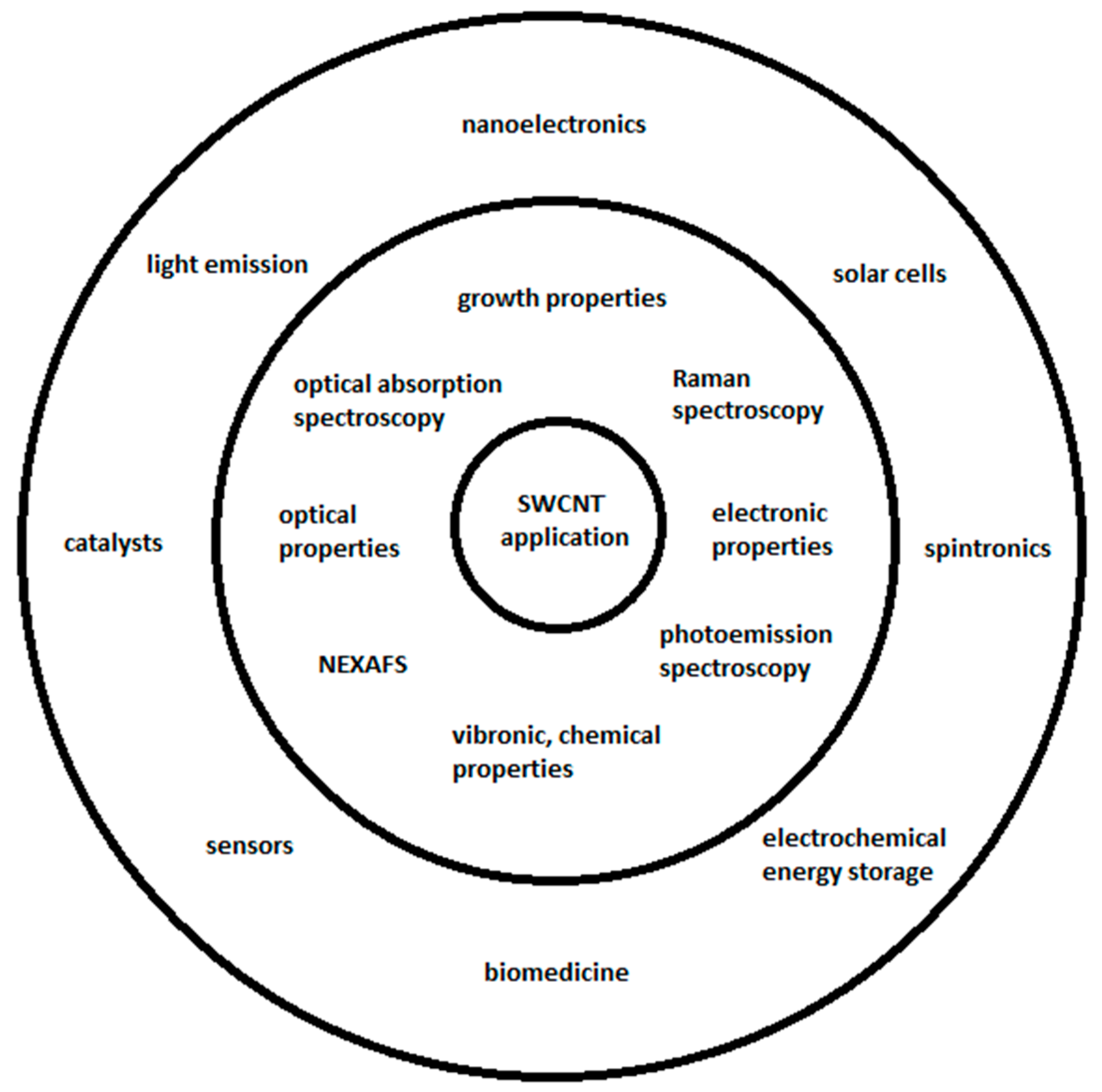
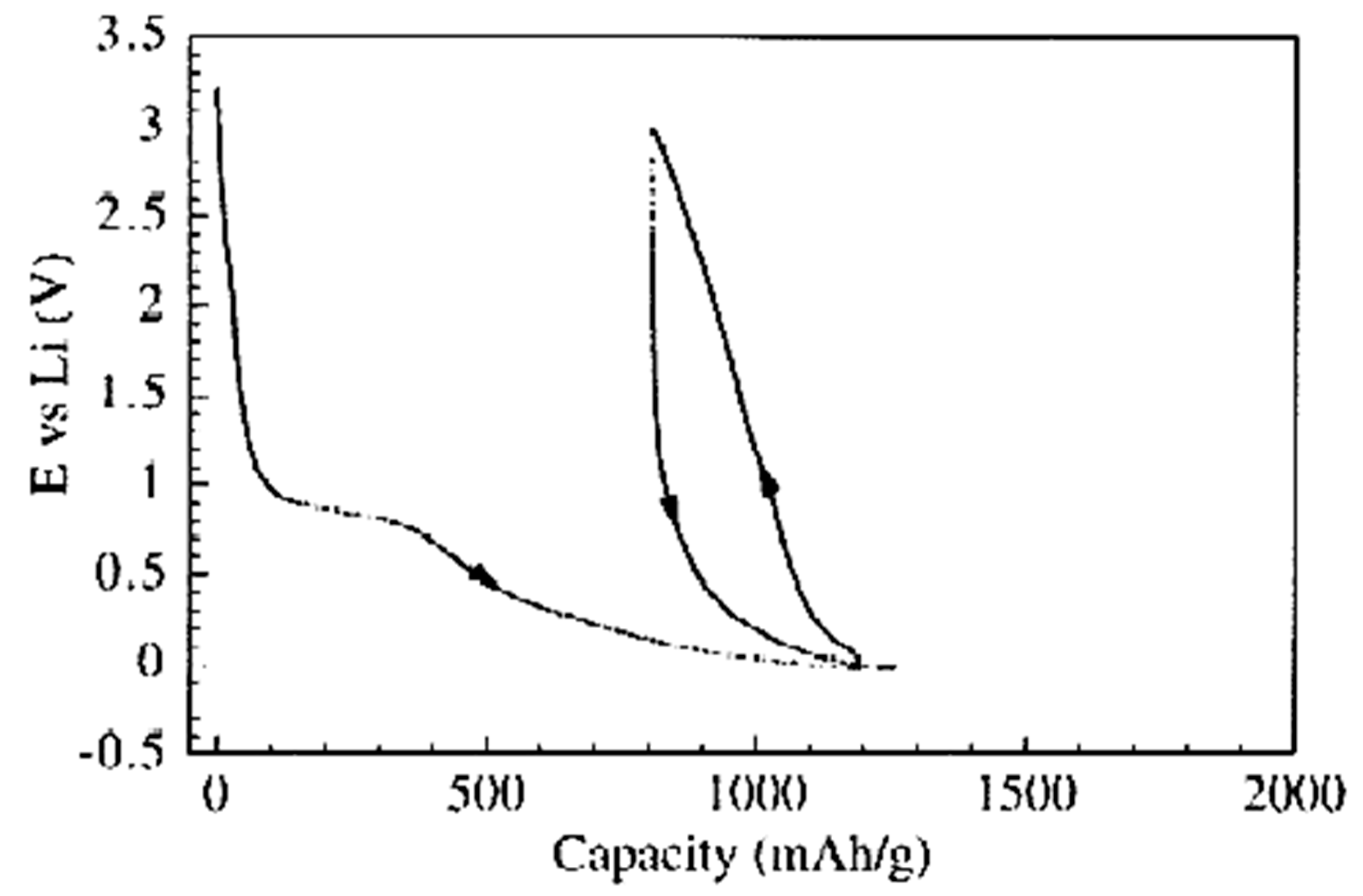
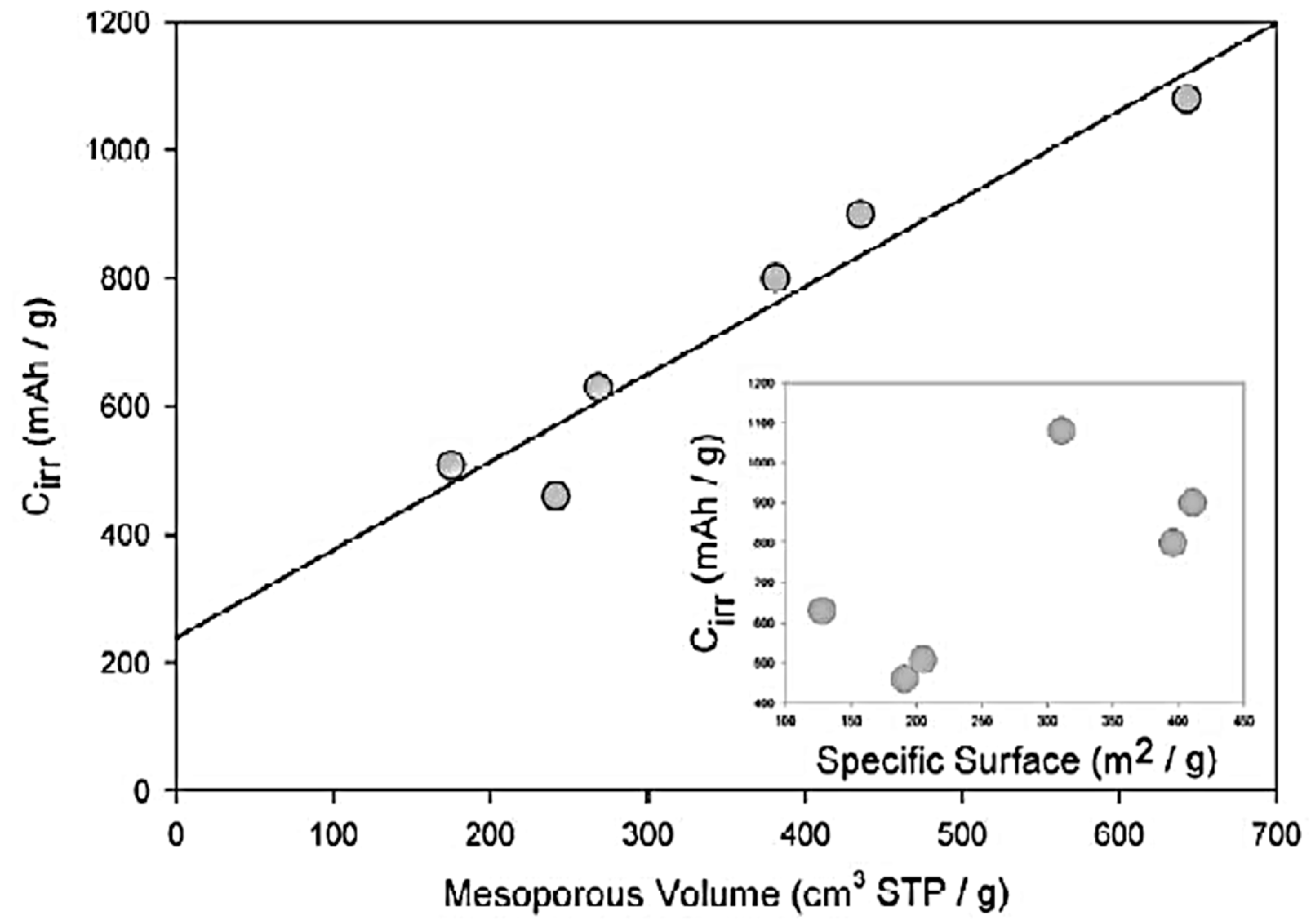
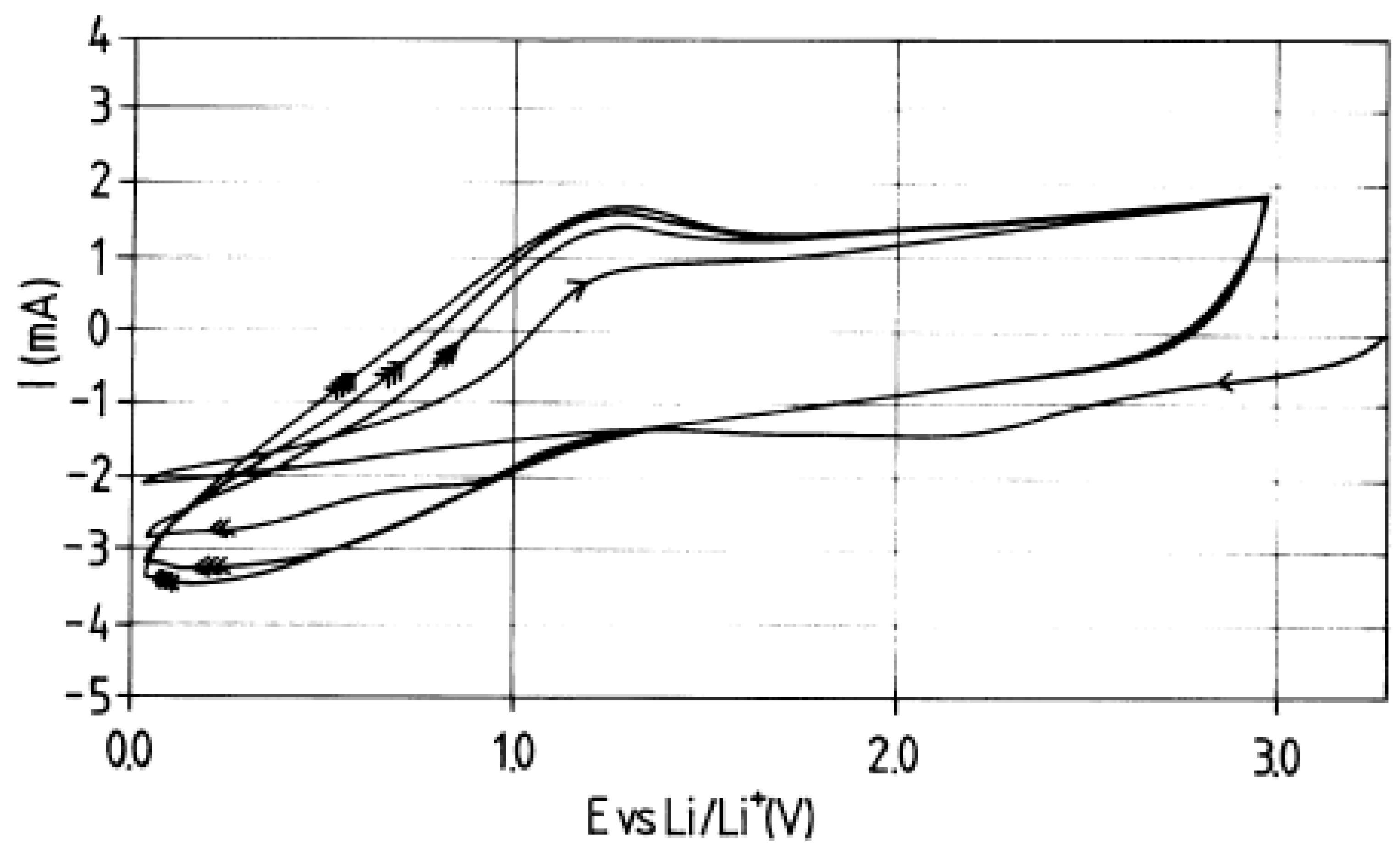
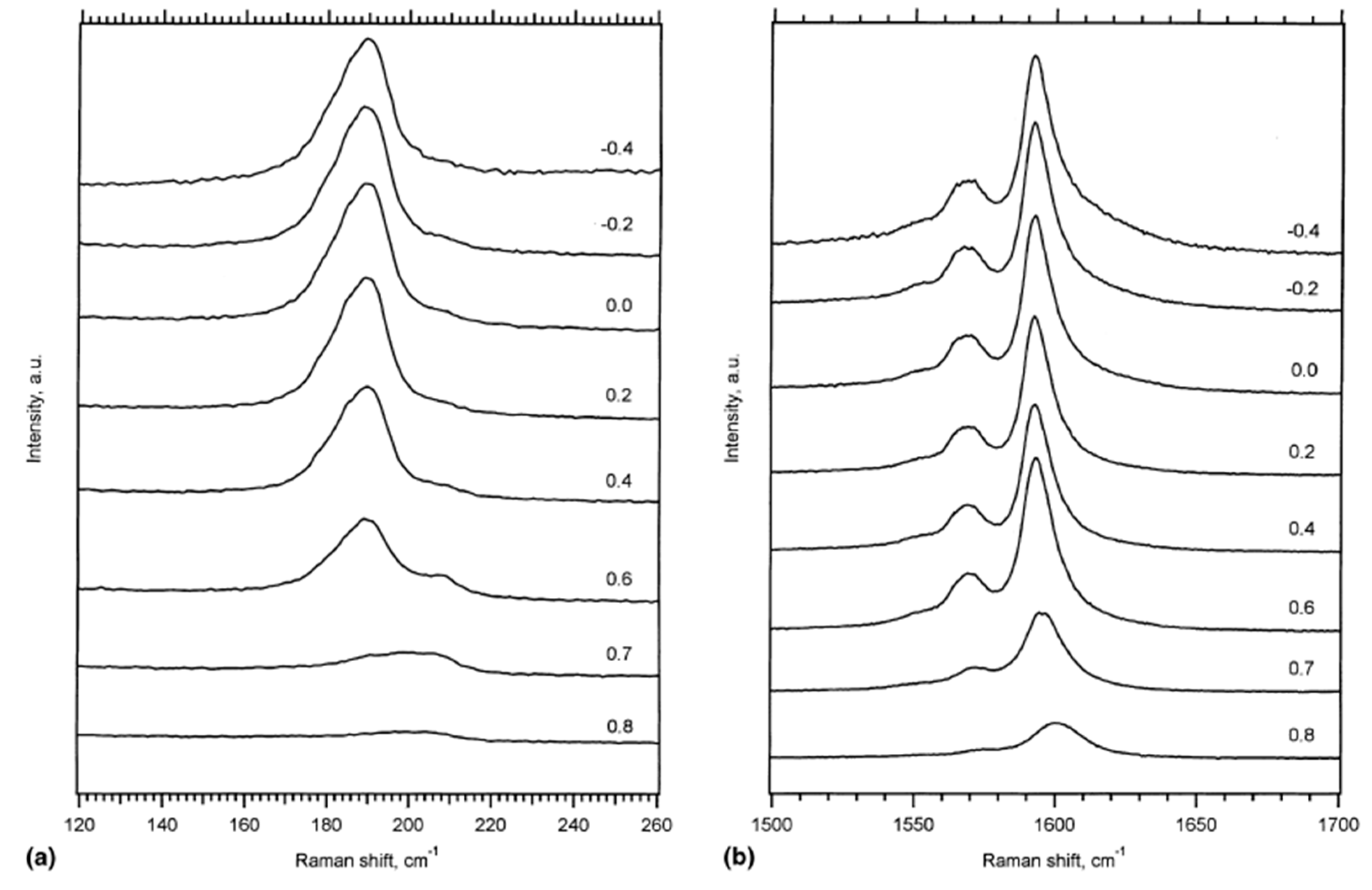
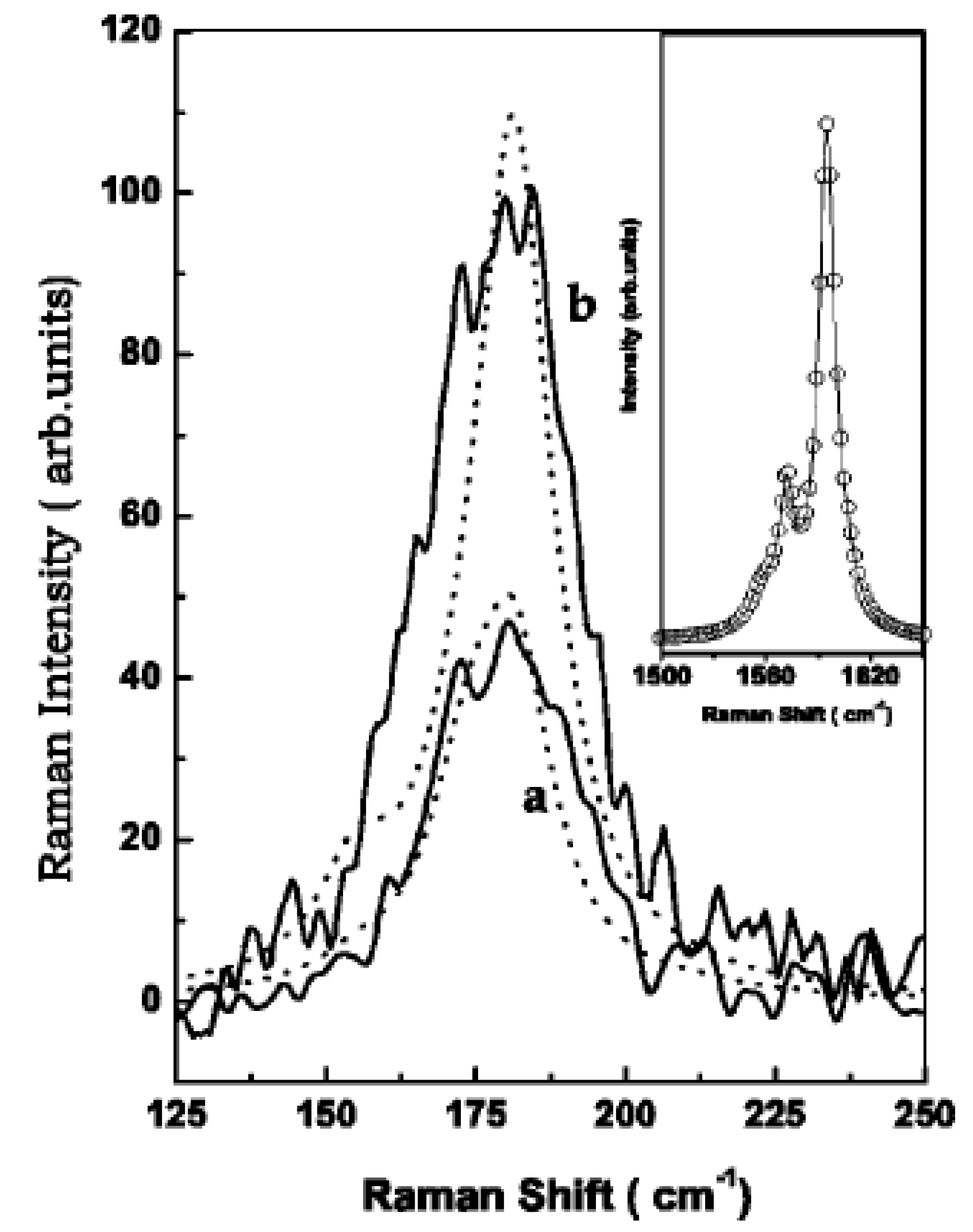

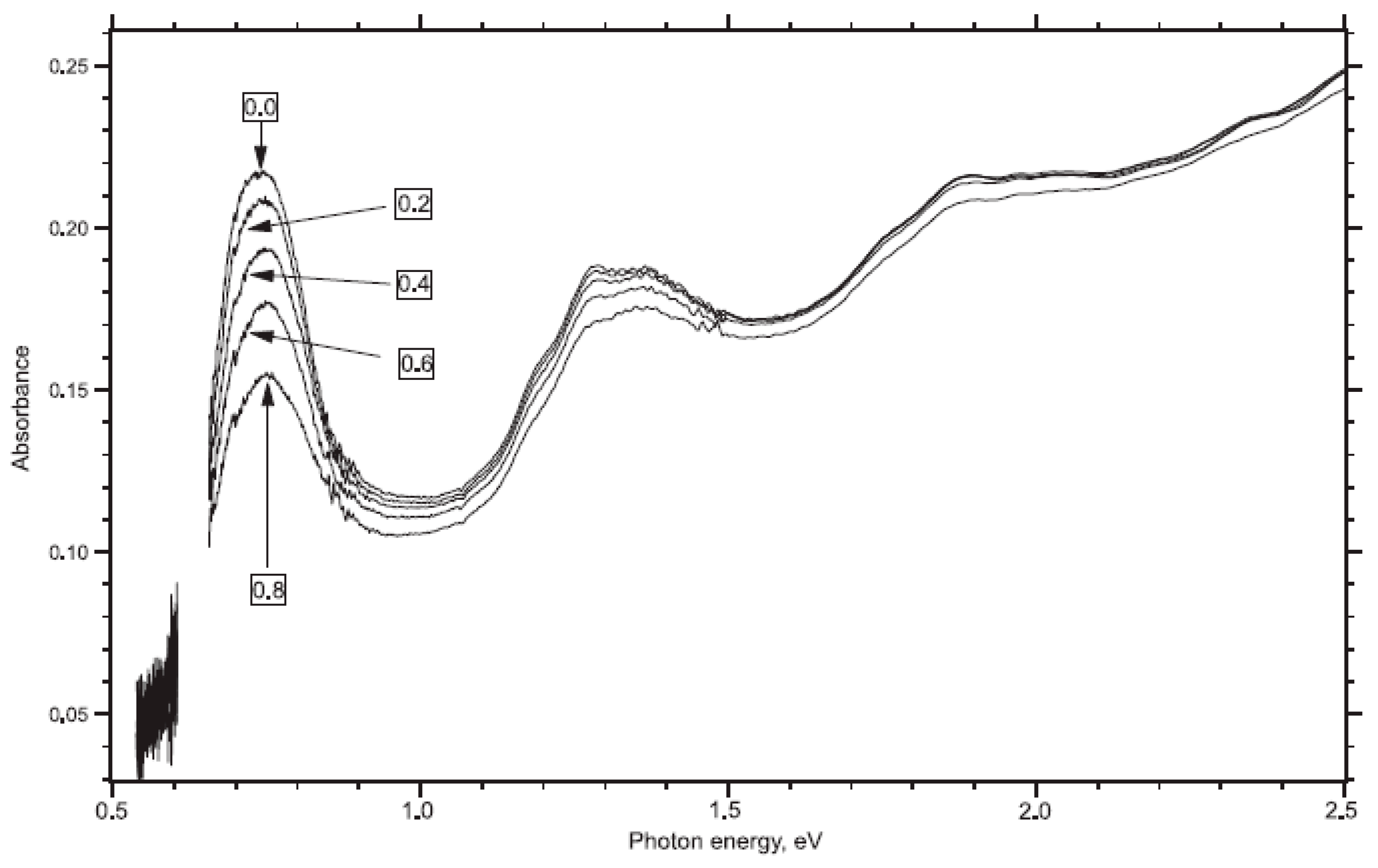
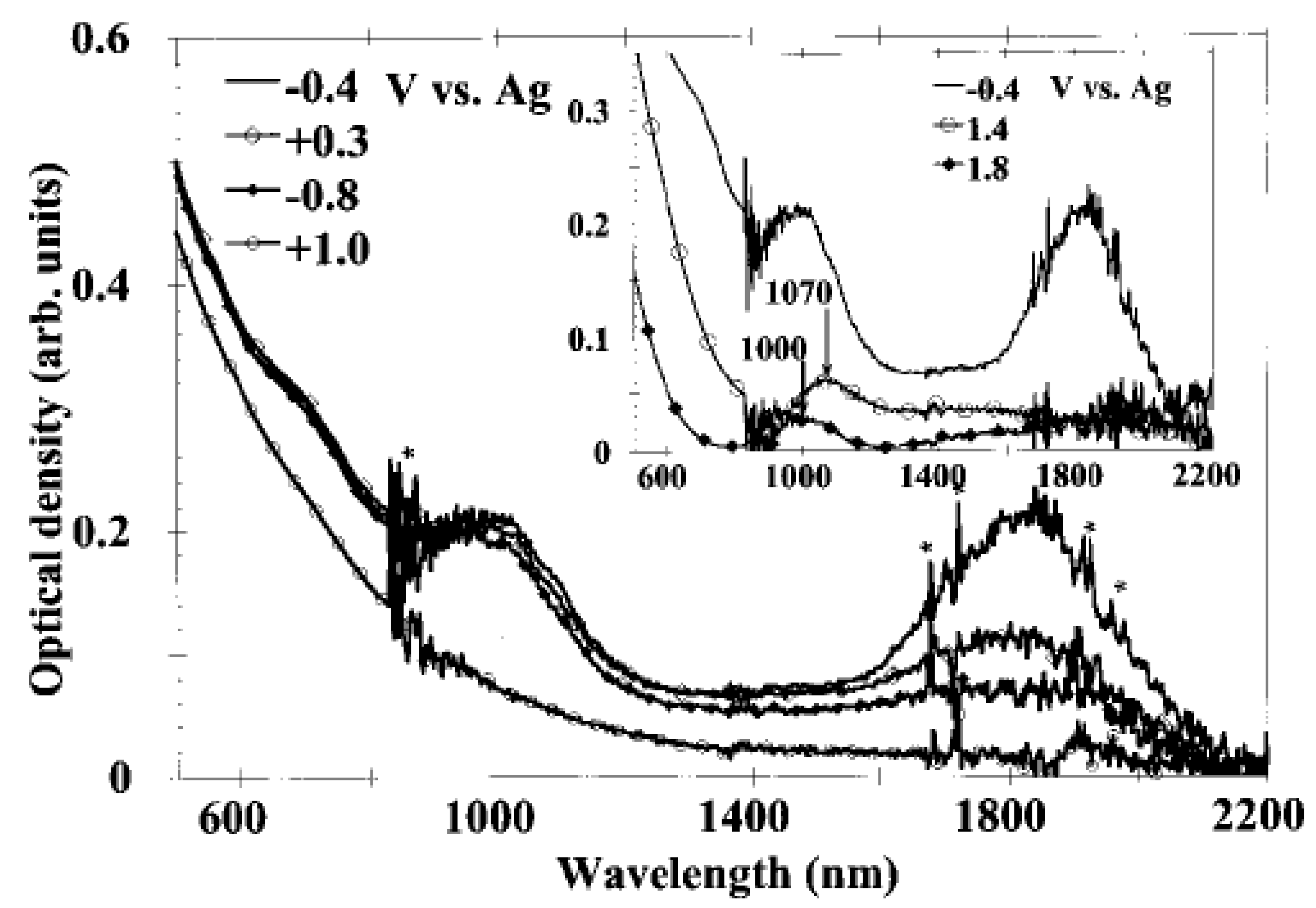


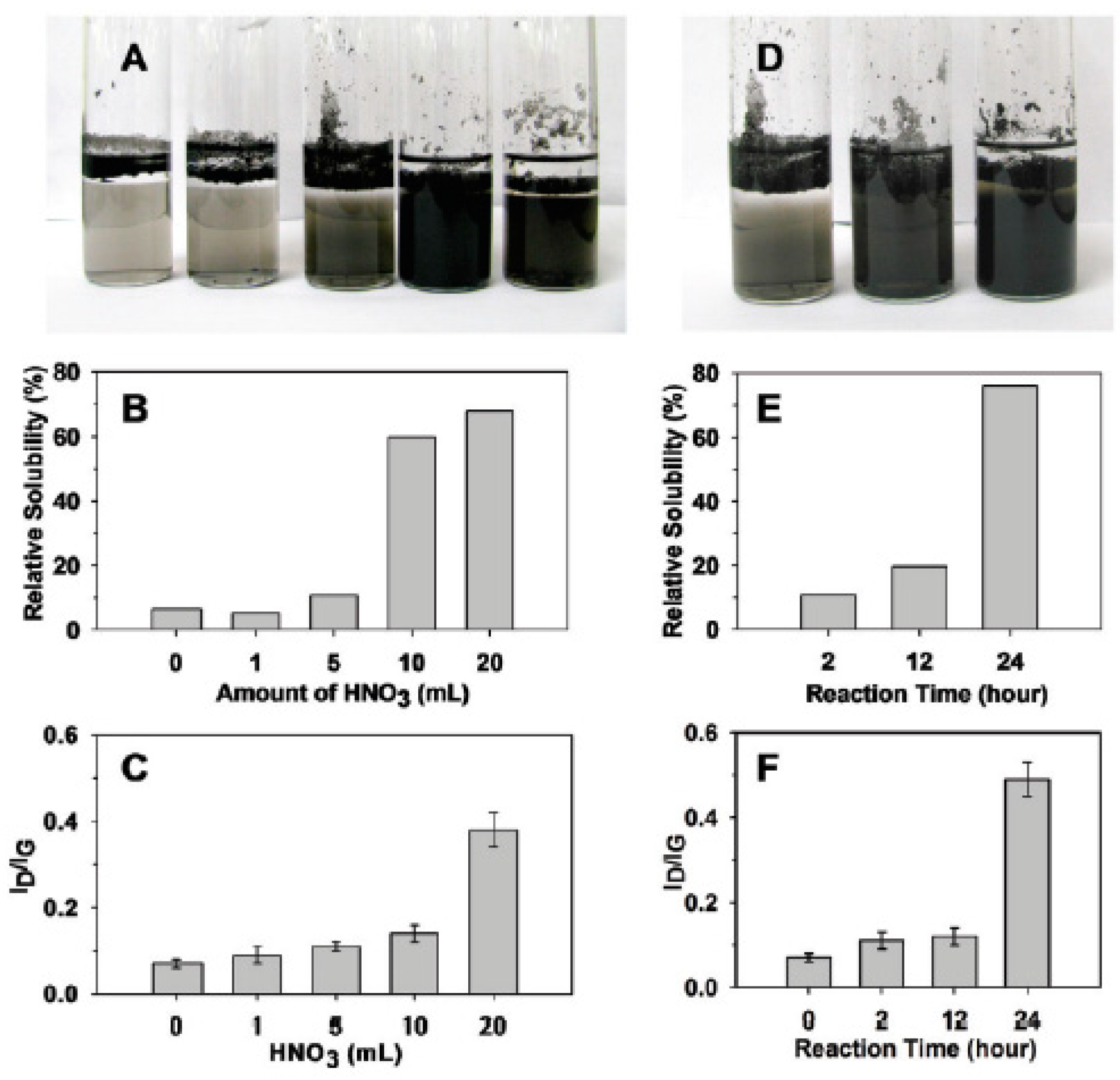
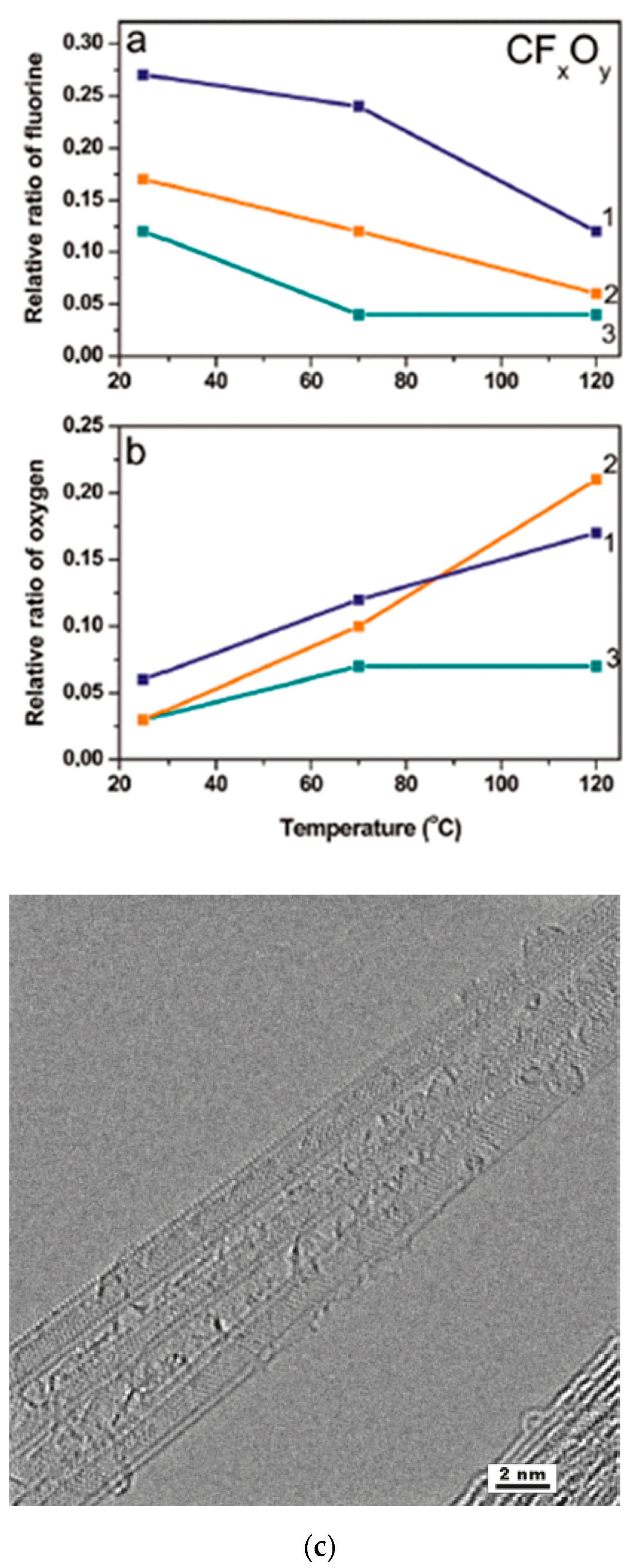
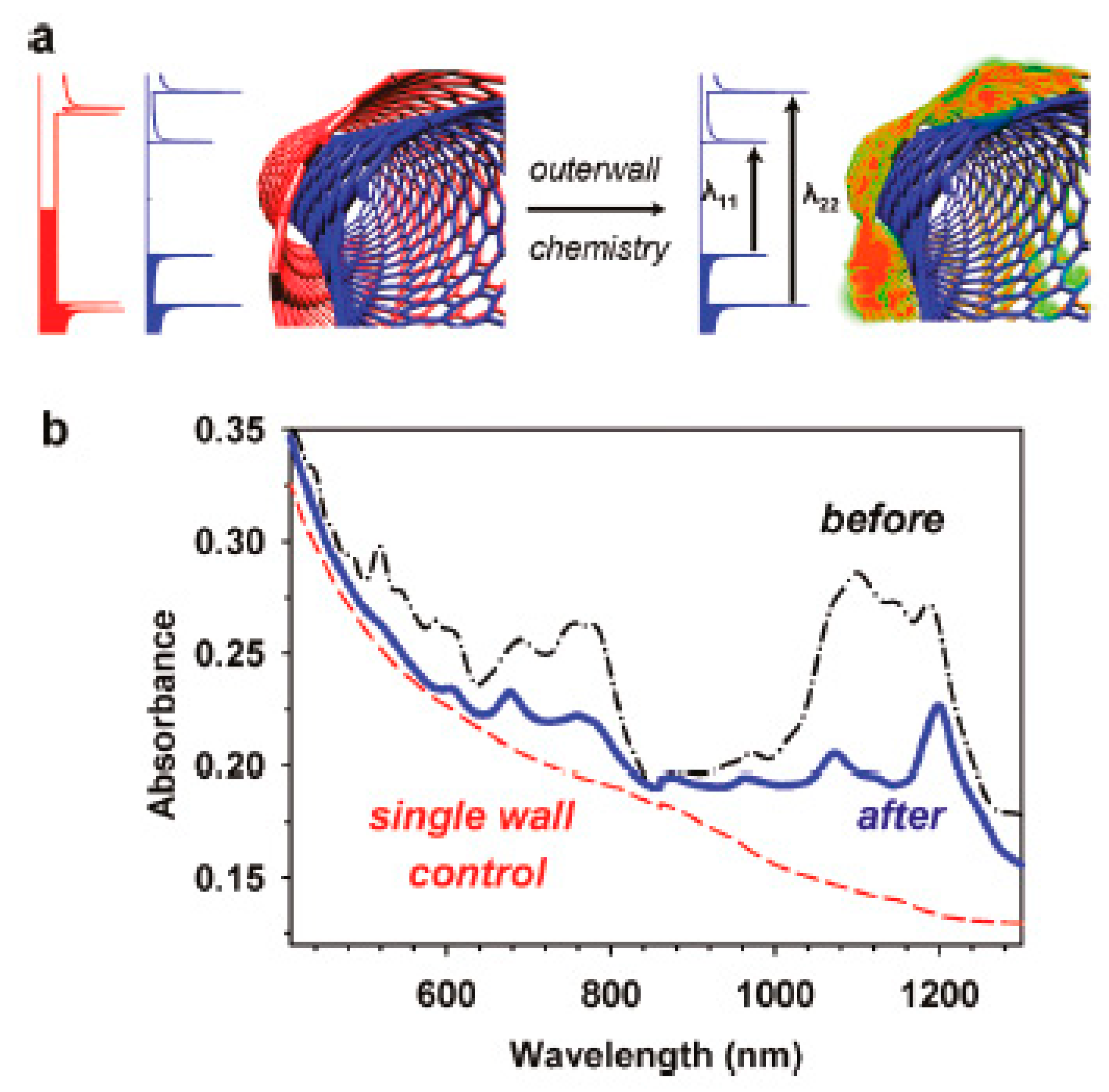
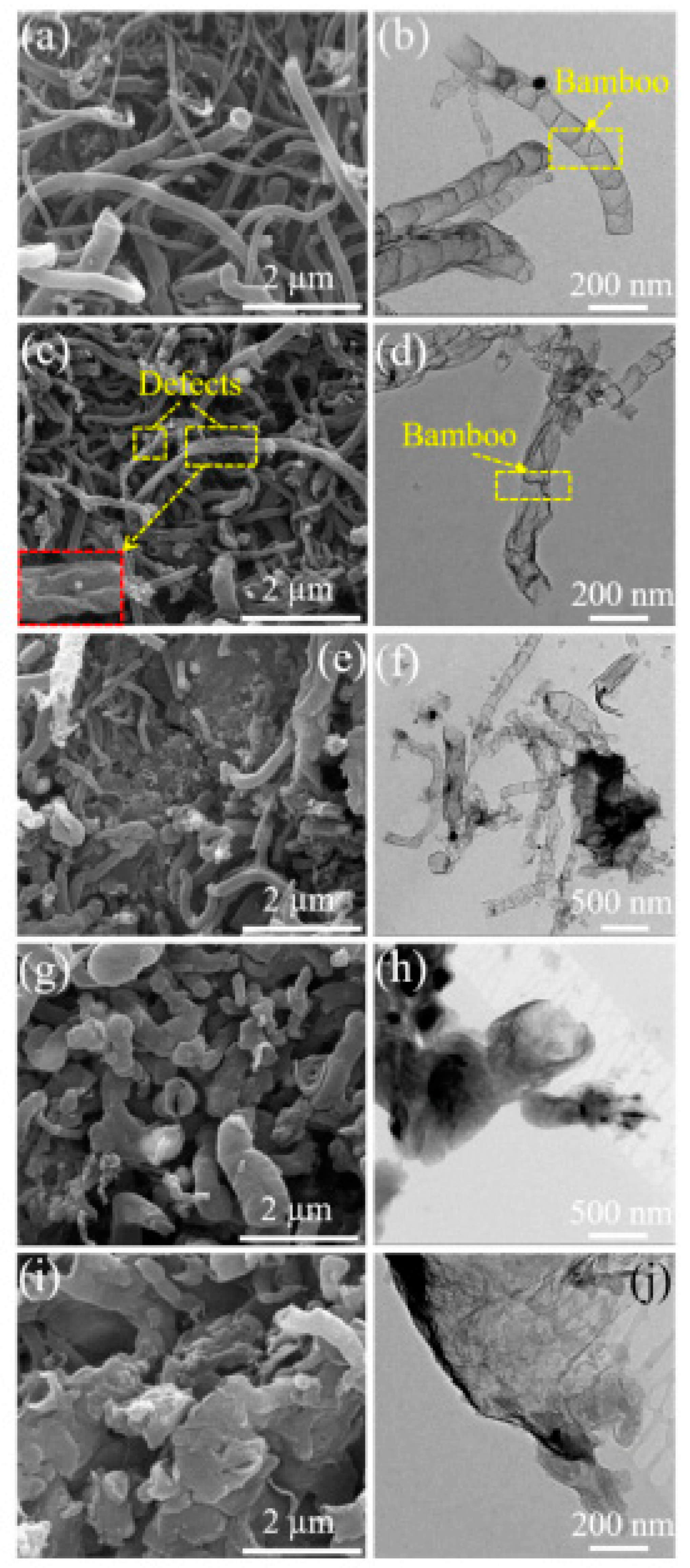

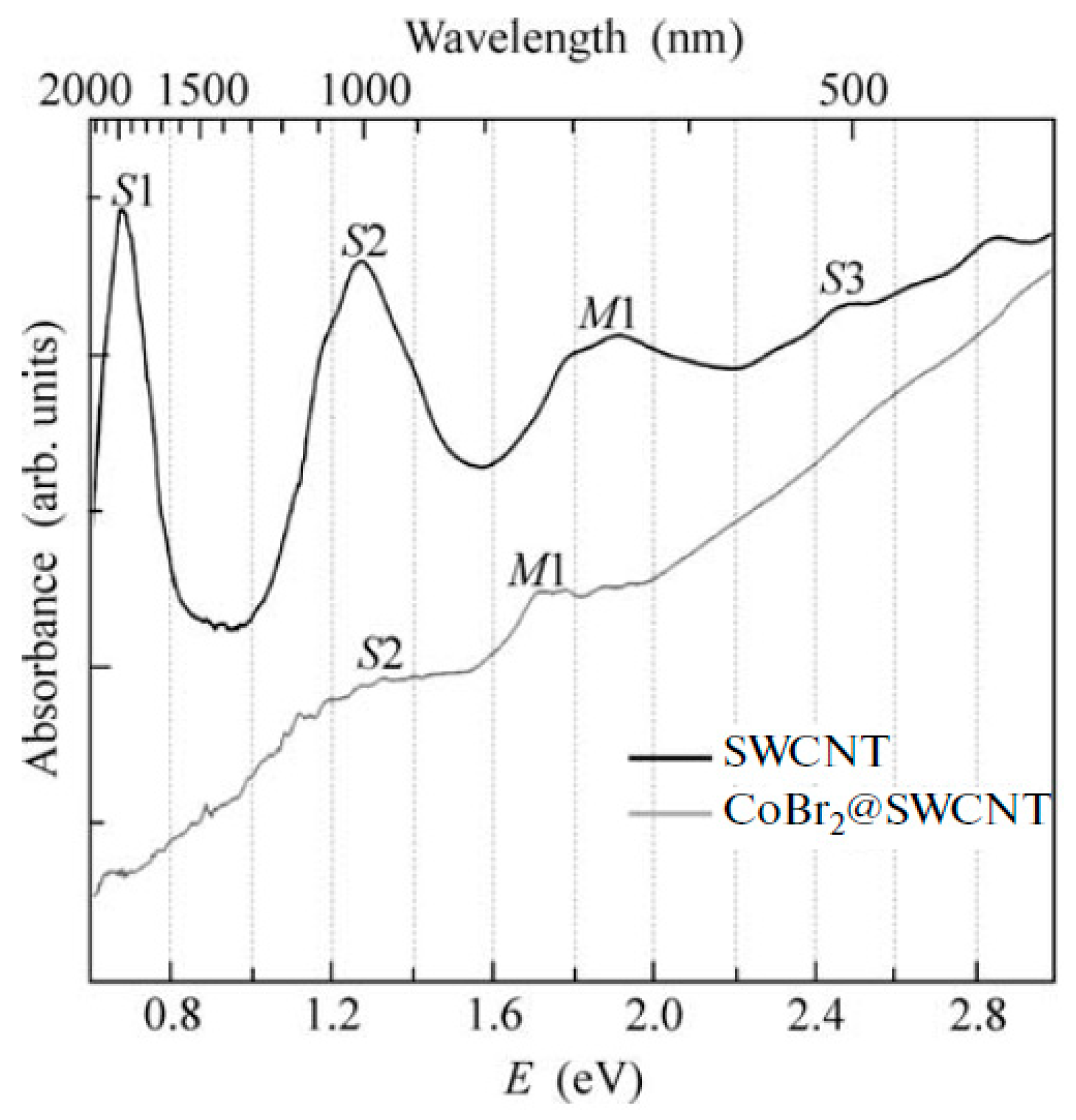
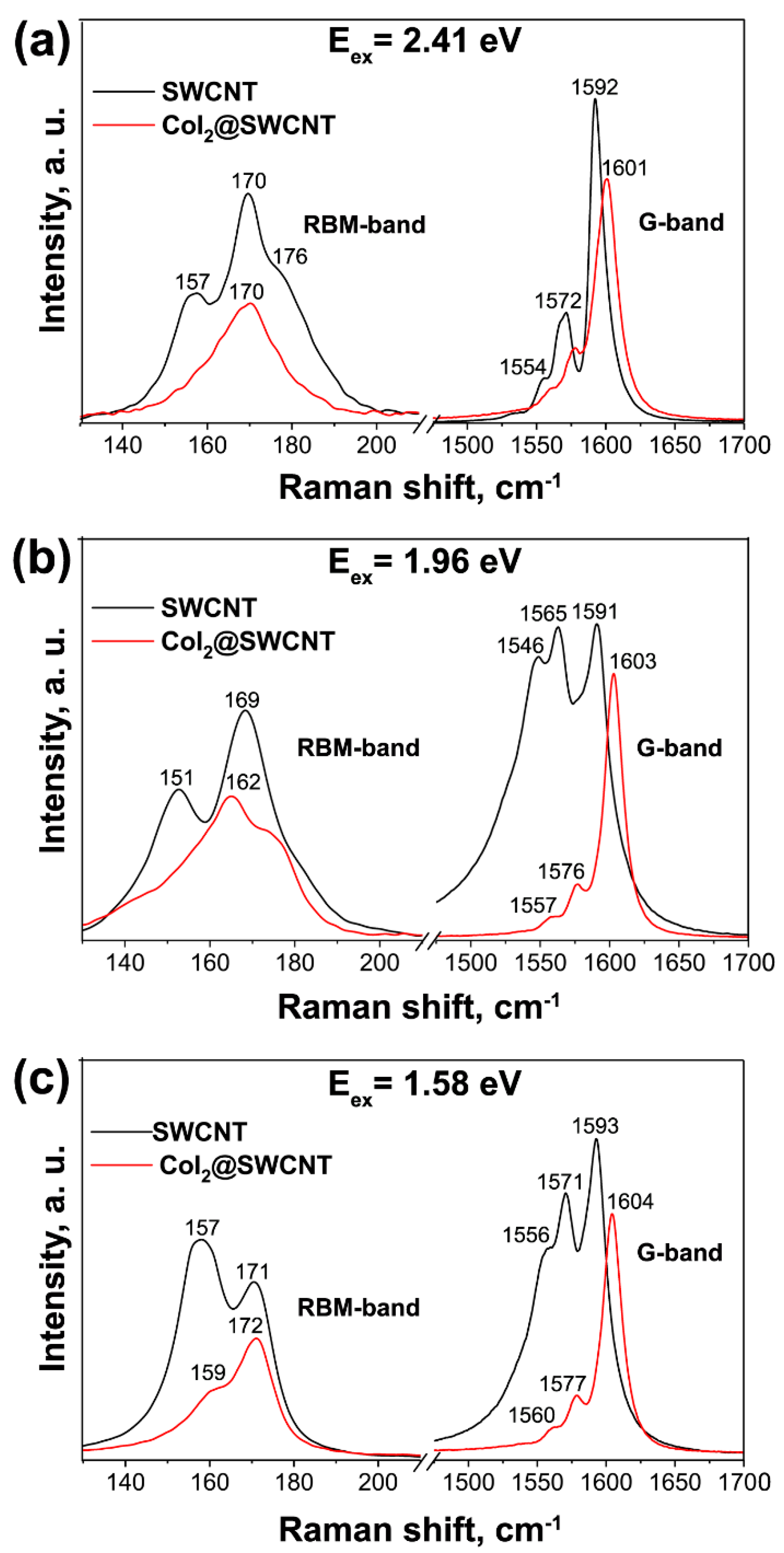
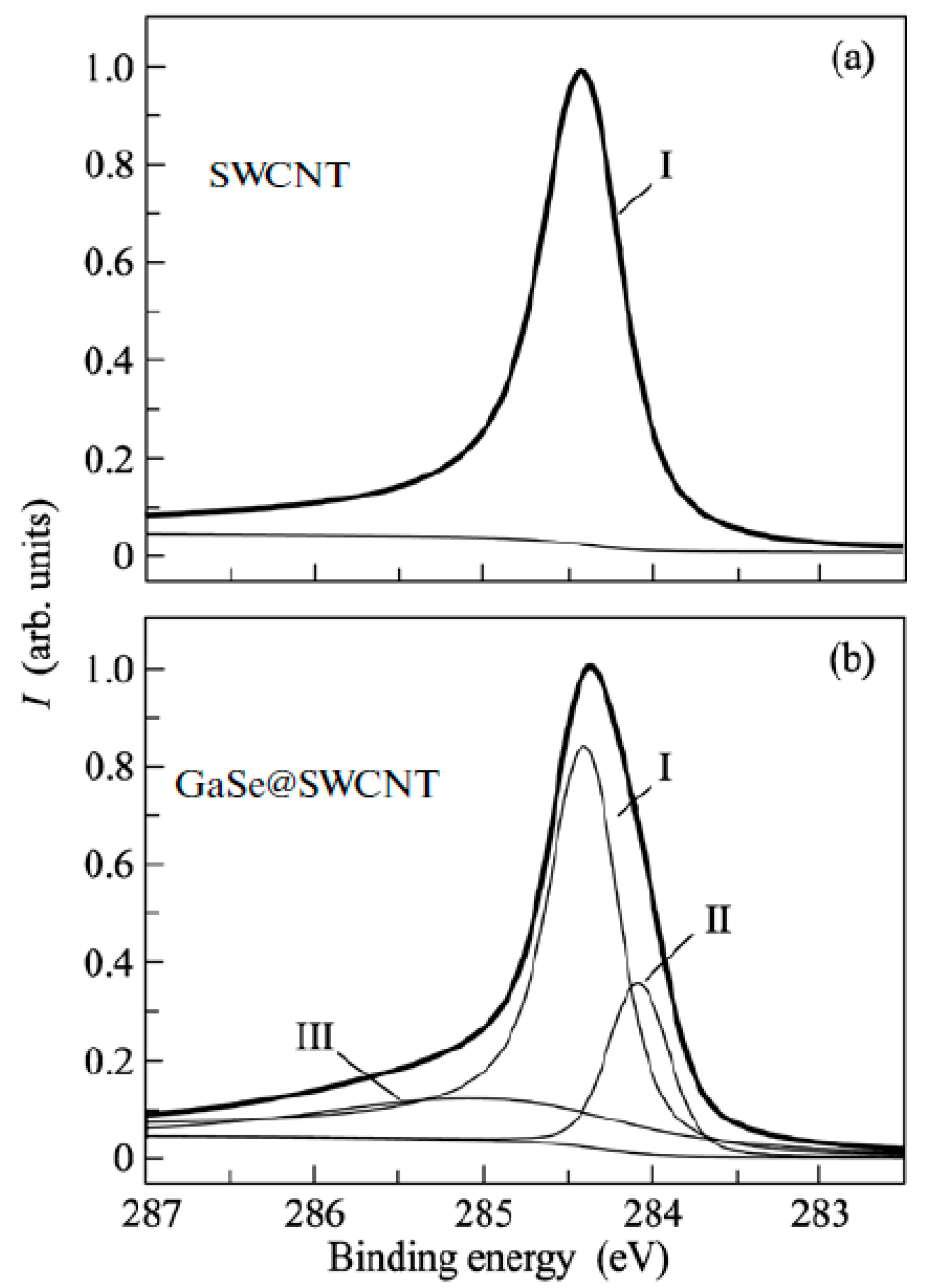
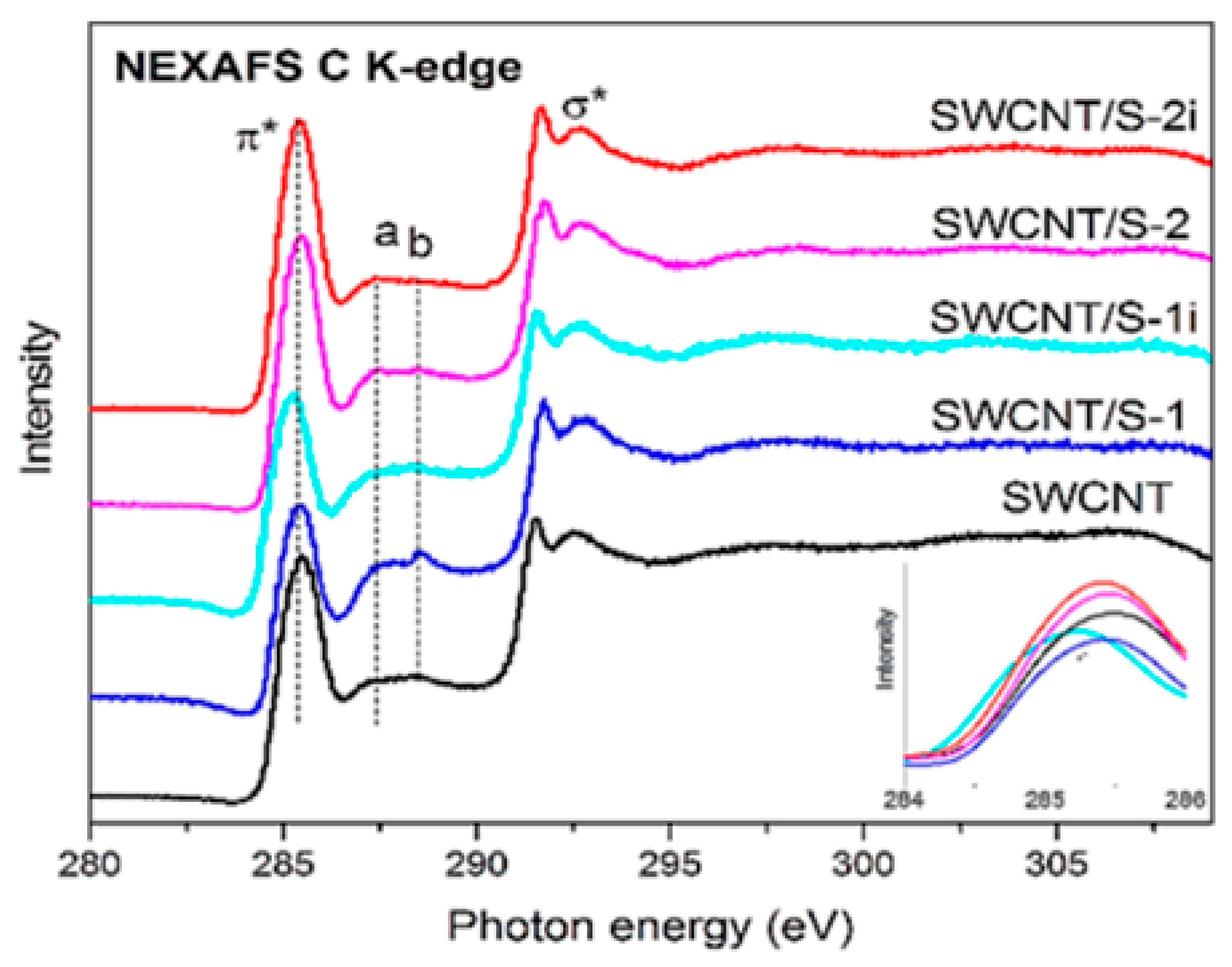
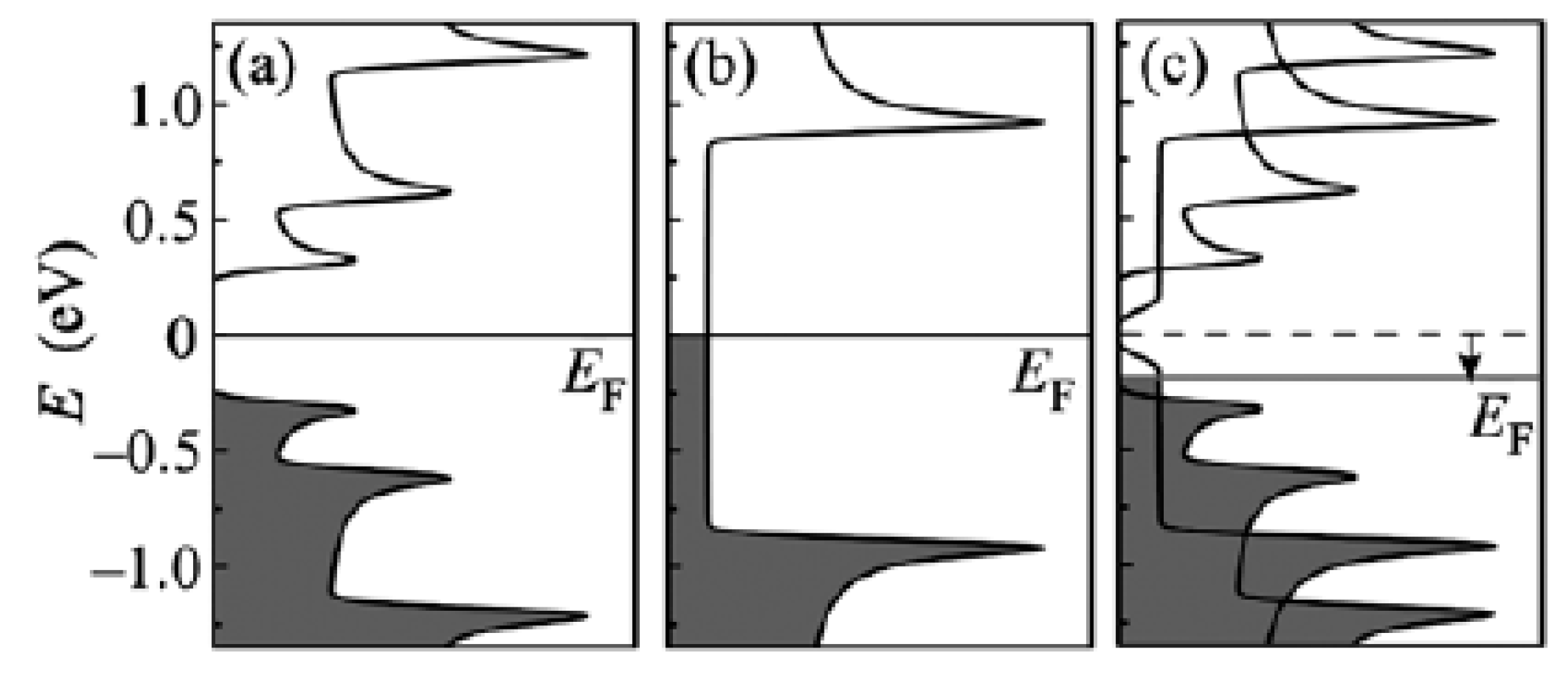
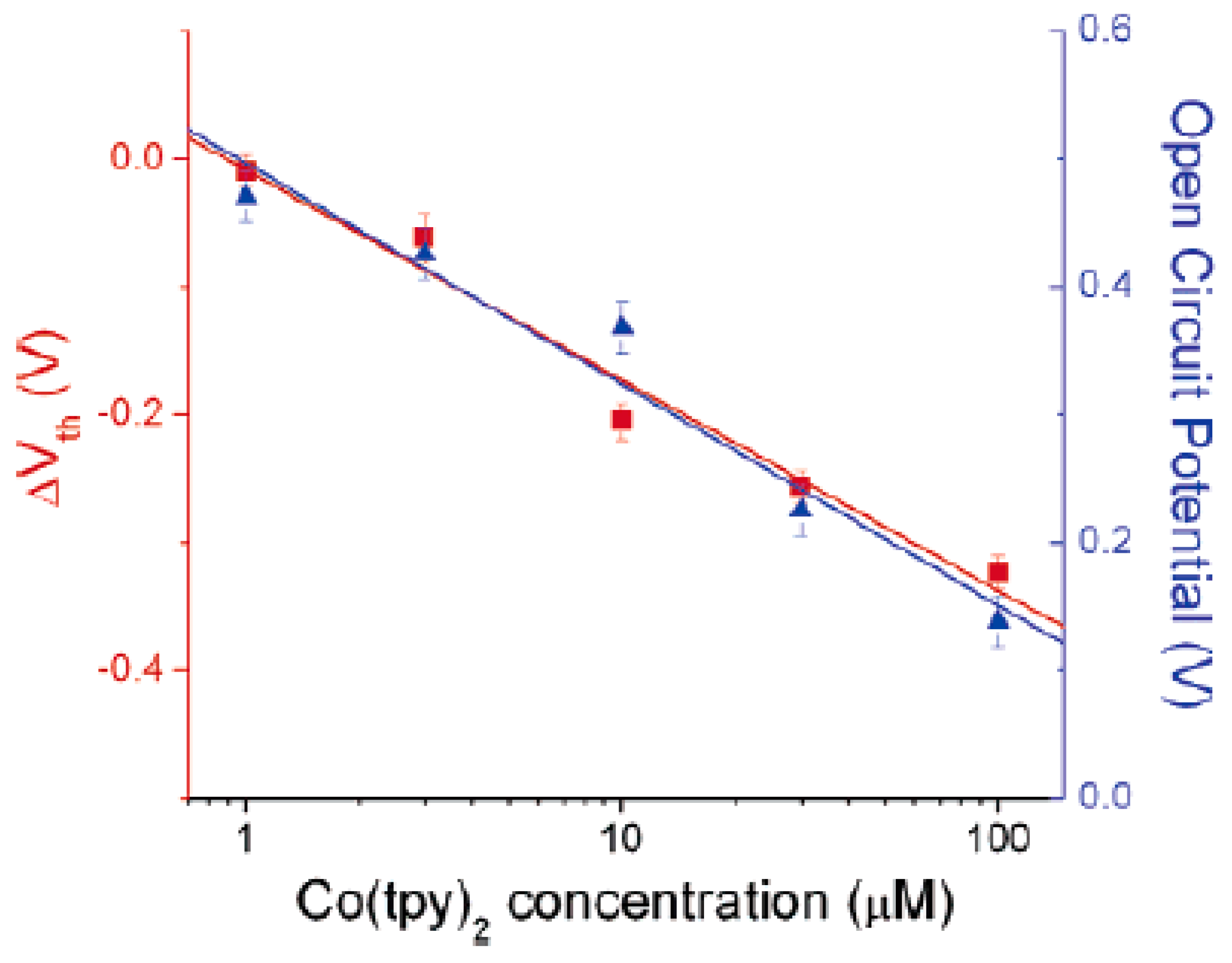
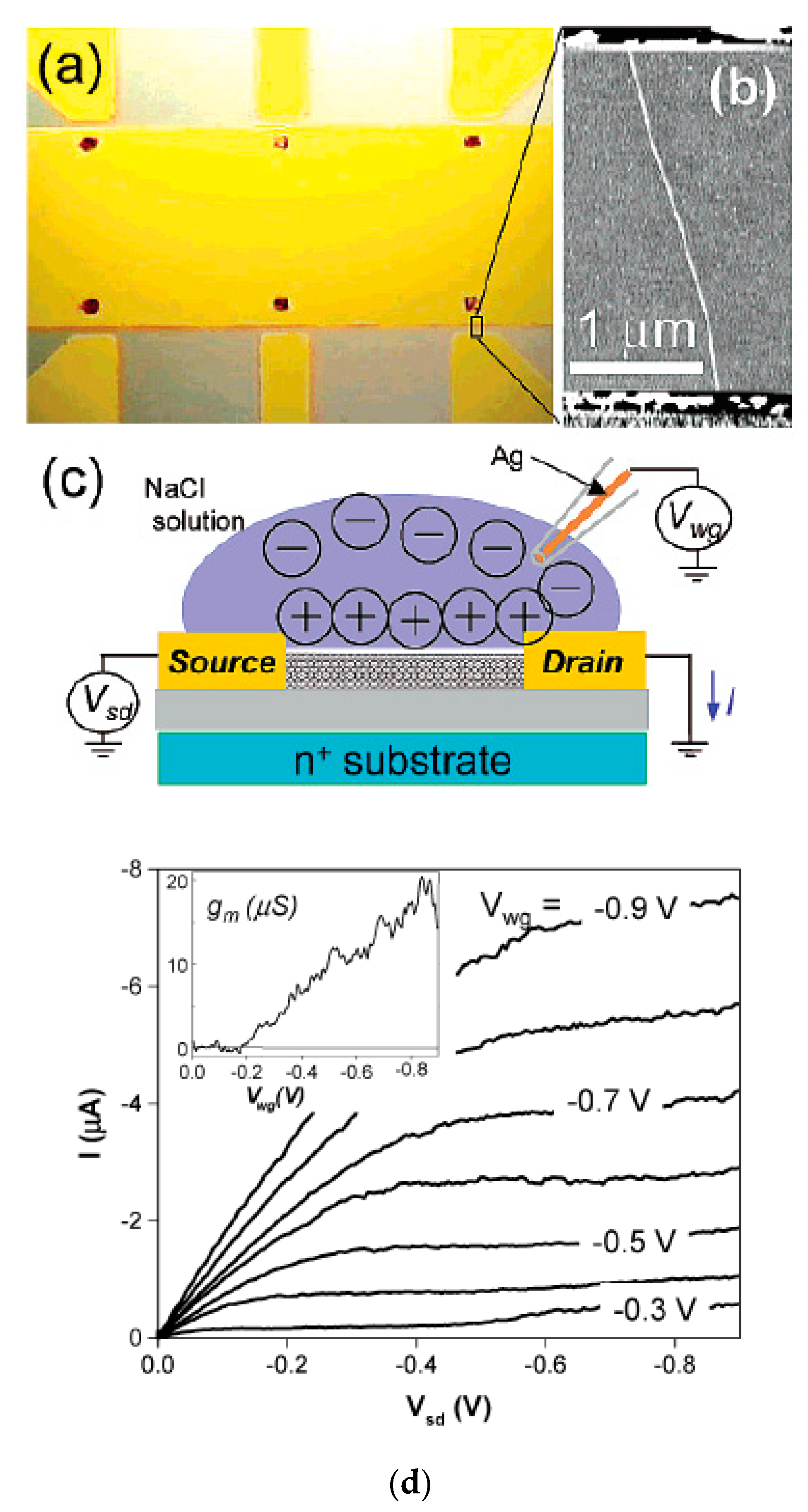
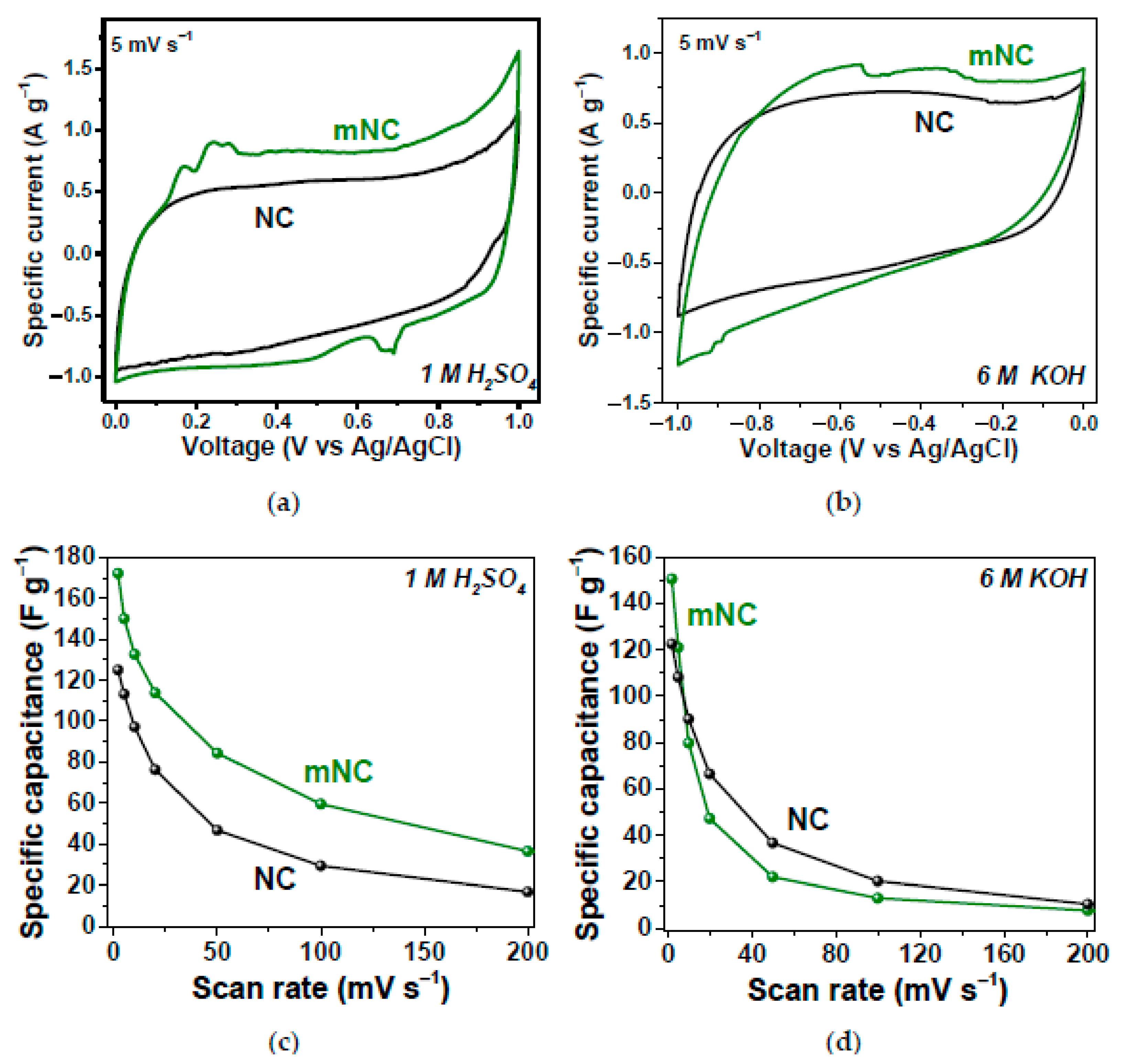
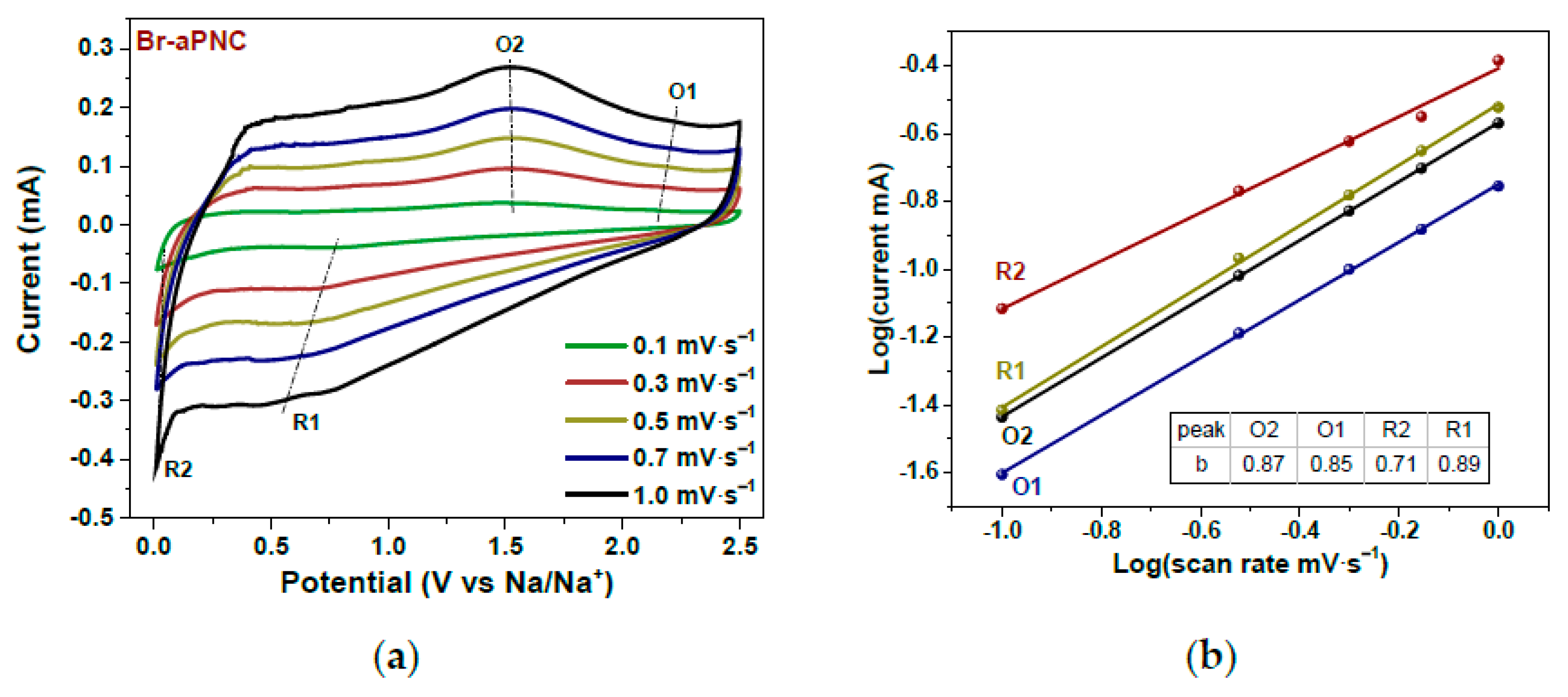
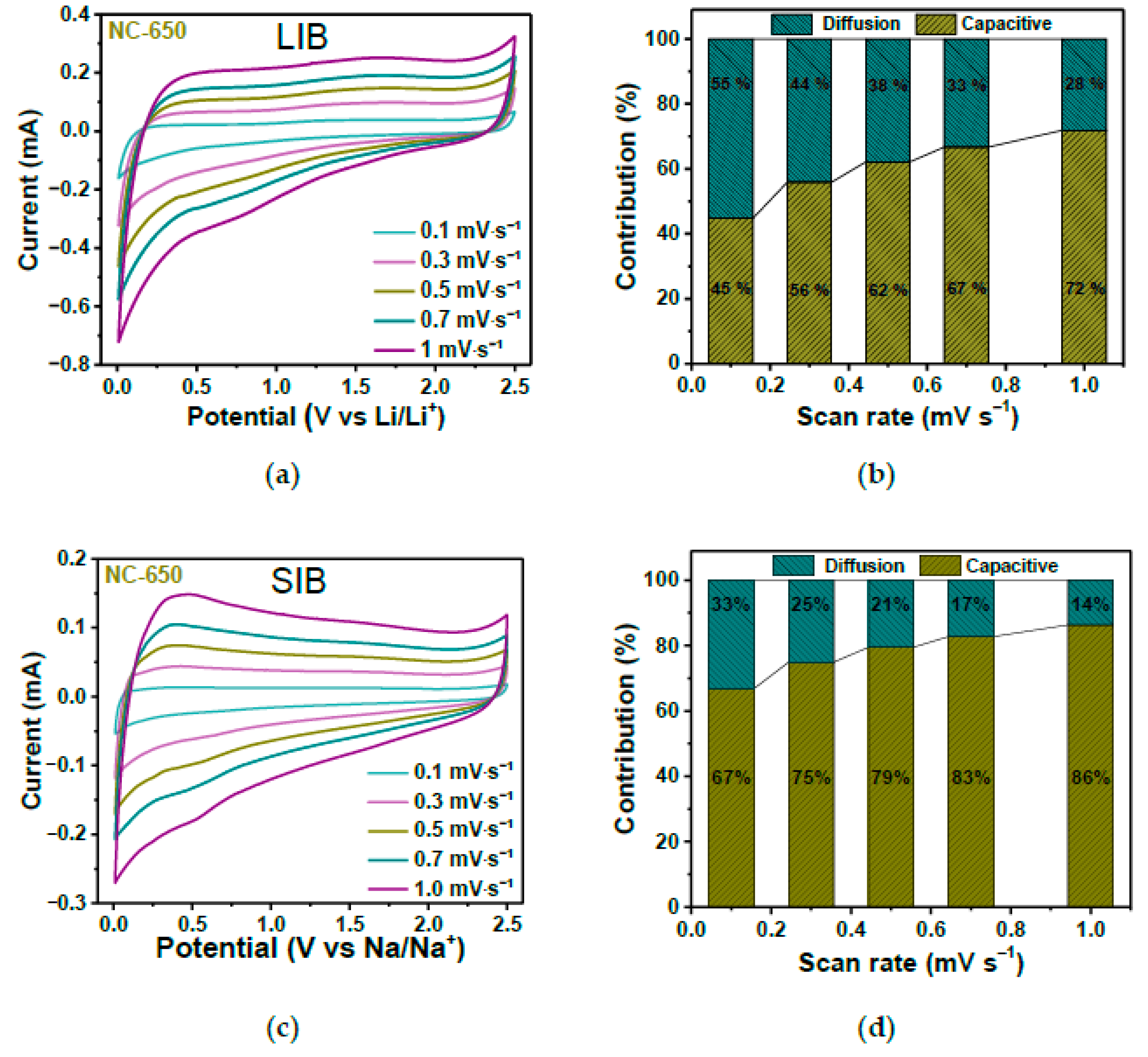

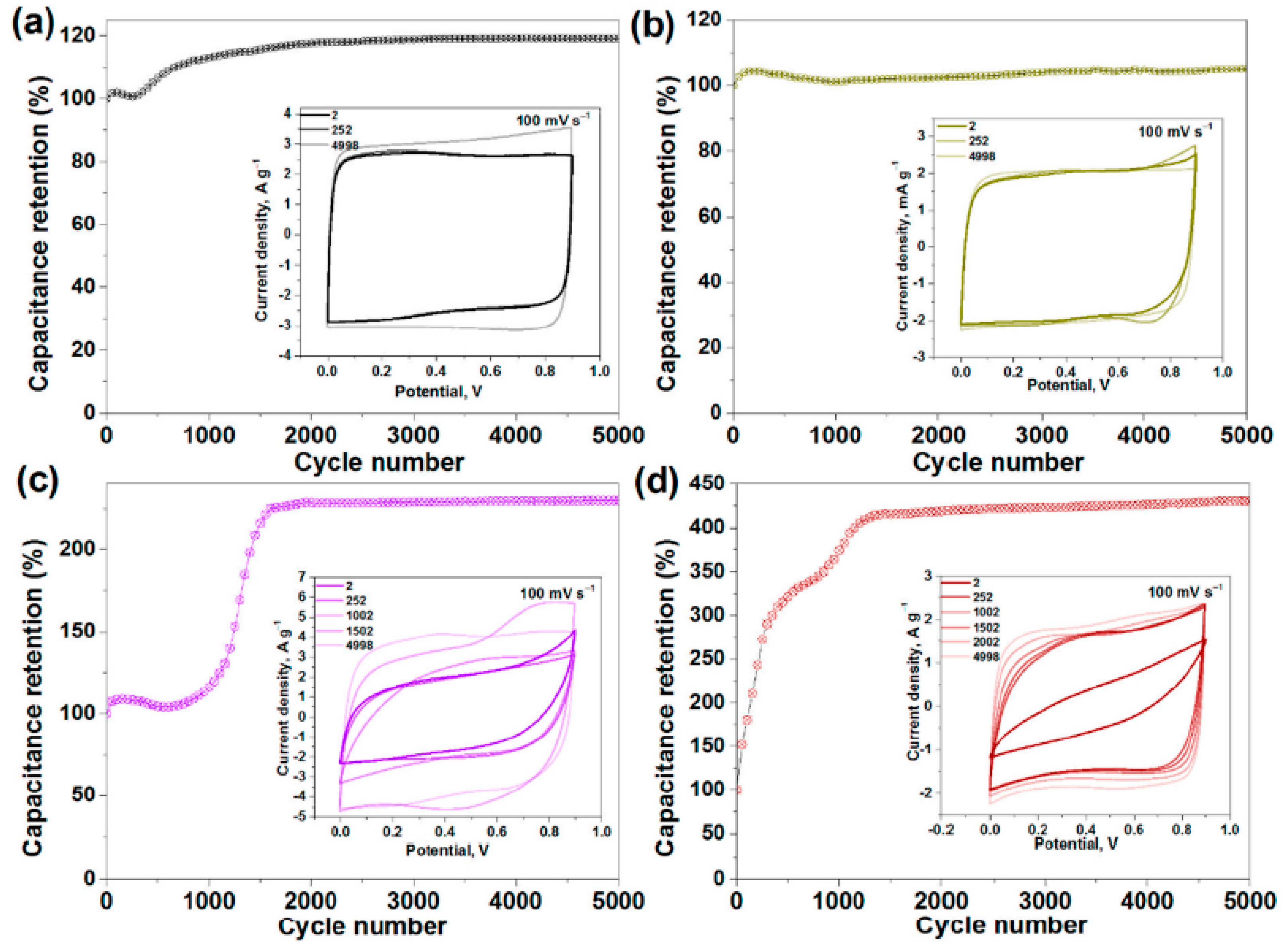
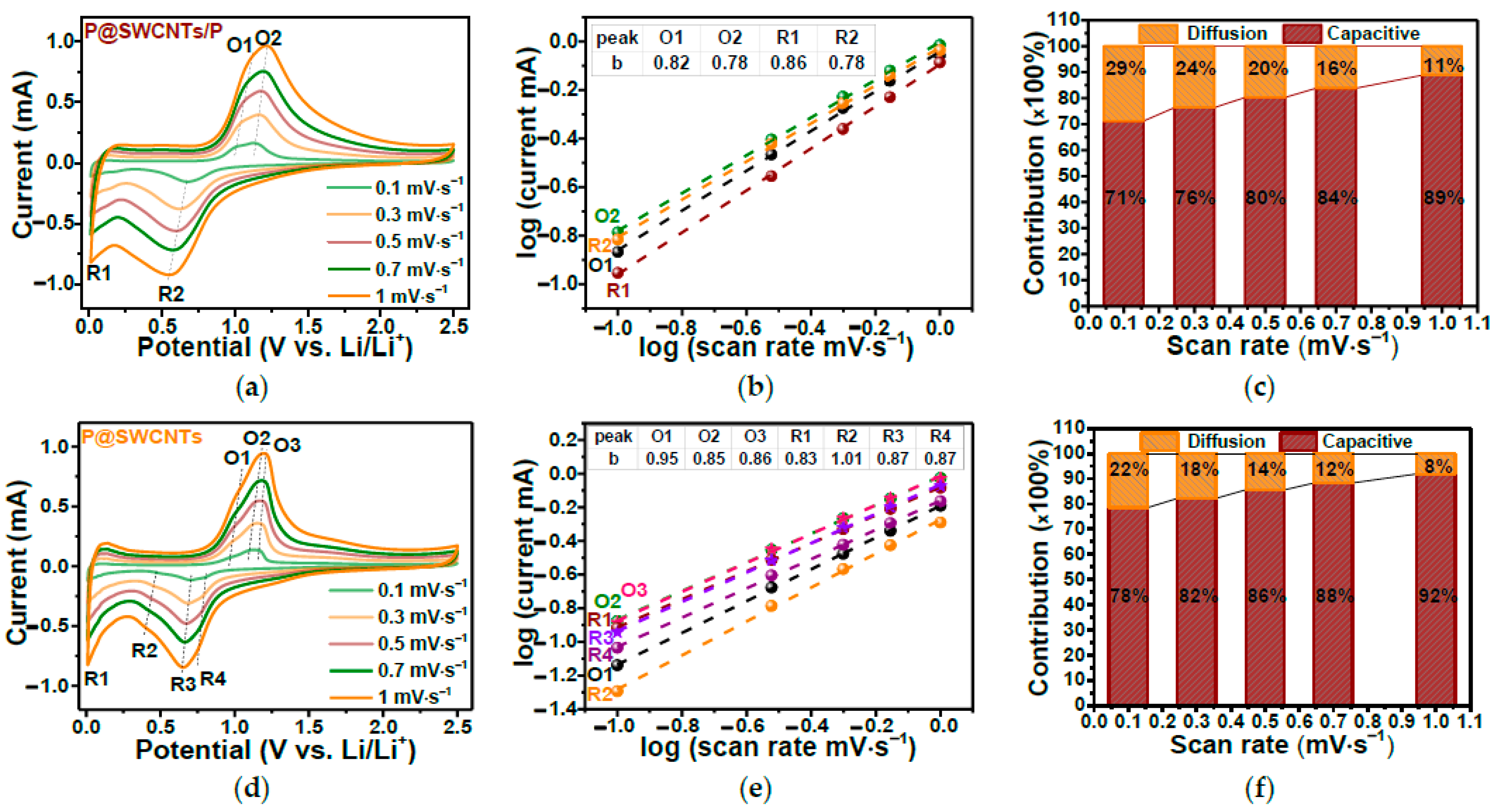
Disclaimer/Publisher’s Note: The statements, opinions and data contained in all publications are solely those of the individual author(s) and contributor(s) and not of MDPI and/or the editor(s). MDPI and/or the editor(s) disclaim responsibility for any injury to people or property resulting from any ideas, methods, instructions or products referred to in the content. |
© 2023 by the authors. Licensee MDPI, Basel, Switzerland. This article is an open access article distributed under the terms and conditions of the Creative Commons Attribution (CC BY) license (https://creativecommons.org/licenses/by/4.0/).
Share and Cite
Kharlamova, M.V.; Kramberger, C. Electrochemistry of Carbon Materials: Progress in Raman Spectroscopy, Optical Absorption Spectroscopy, and Applications. Nanomaterials 2023, 13, 640. https://doi.org/10.3390/nano13040640
Kharlamova MV, Kramberger C. Electrochemistry of Carbon Materials: Progress in Raman Spectroscopy, Optical Absorption Spectroscopy, and Applications. Nanomaterials. 2023; 13(4):640. https://doi.org/10.3390/nano13040640
Chicago/Turabian StyleKharlamova, Marianna V., and Christian Kramberger. 2023. "Electrochemistry of Carbon Materials: Progress in Raman Spectroscopy, Optical Absorption Spectroscopy, and Applications" Nanomaterials 13, no. 4: 640. https://doi.org/10.3390/nano13040640






